

Celebrating a Global Ambassador for Animal Welfare
AWI’s work to protect animals and their environment couldn’t be accomplished without our supporters and the advocates whose calls to policymakers and legislators reinforce our work. Even as we seek to counter unprecedented efforts to erode federal protections for animals in the United States, we also look to maintain progress on a global scale.
I recently returned from London where I had been invited to speak at a reception for The Right Honorable Lord Goldsmith of Richmond Park. The event was hosted by The Lord Gascoigne and organized by the UK-based Conservative Animal Welfare Foundation, with support from Compassion in World Farming and the Africa Network for Animal Welfare. Among other notable figures in attendance was the UK
animal welfare minister, The Baroness Hayman of Ullock, Parliamentary Under-Secretary of State at the Department for Environment, Food and Rural Affairs.
Lord Goldsmith has long campaigned for improved animal welfare and environmental protections within the United Kingdom, including a ban on the commercial trade of elephant ivory. Internationally, he was key to the passage of a 2022 UN Environmental Assembly resolution on animal welfare that recognized the interconnected relationship between animal welfare, human welfare, and the environment. This landmark resolution led the United Nations to commission a report aimed at deepening the understanding of these connections, including how animal welfare improvements relate to humankind’s efforts to address key global challenges such as biodiversity loss, climate change, pollution, and the emergence of pandemics and zoonotic diseases.
AWI works alongside animal welfare champions such as Lord Goldsmith to germinate cooperative international actions rooted in an understanding that advancing animal welfare goes hand in hand with efforts to create a better world for people and to nurture a planetary biosphere capable of sustaining us all. Your support is helping us do that, and we are very grateful.
—Susan Millward
DIRECTORS AND OFFICERS
Jill Carey
Caroline A. Griffin, Esq., Vice Chair
Mary Lee Jensvold, PhD, Secretary
Alan E. Kessock, CPA, Treasurer
Cathy Liss, Chair
Chris Miller, DVM
William S. Stokes, DVM
SCIENTIFIC COMMITTEE
Juan Carlos Cardenas, DVM
Cristina Eisenberg, PhD
Roger Fouts, PhD
David Fraser, PhD
Rich Reading, PhD
Viktor Reinhardt, DVM, PhD
Robert Schmidt, PhD
900 Pennsylvania Avenue, SE Washington, DC 20003
(202) 337-2332 • awi@awionline.org
ISSN 1071-1384 (print)
ISSN 1930-5109 (online)
Tax ID# 13-5655952 • CFC# 10474
STAFF AND CONSULTANTS
Animals in Laboratories Program
Maisy Englund, PhD • Scientist, Animal Cognition
Joanna Makowska, PhD • Director and Senior Scientist, Applied Animal Behavior
Ashley Ridgway, Esq. • Policy Advisor and Staff Attorney
Communications
Alexandra Alberg • Senior Graphic Designer
Marjorie Fishman • Public Relations Manager
Kim Meneo • Senior Manager, Strategic Communications
Niki Sebastino • Website Administrator
Dave Tilford • Senior Writer/Editor
Companion Animal Program
Claire Coughlin • Director
Val Peña • Policy Associate
Equine Program
Tessa Archibald • Policy Associate
Joanna Grossman, PhD • Director
Executive Team
Robin Jacobsohn, Esq. • General Counsel and Chief Legal Officer
Paul Marchione • Chief Operations Officer
Susan Millward • Executive Director and Chief Executive Officer
Farmed Animal Program
Adrienne Craig, Esq. • Senior Policy Associate and Staff Attorney
Allie Granger • Policy Advisor
Michelle Graziosi • Science Fellow
Joanna Grossman, PhD • Senior Policy Advisor
Gwendy Reyes-Illg, DVM • Scientist, Veterinary Medicine Consultant
Zack Strong, Esq. • Director and Senior Attorney
Government Affairs
Nancy Blaney • Director
Kate Dylewsky • Assistant Director
Ericca Gandolfo • Senior Policy Associate
Humane Education Program
Wendy McNally • Senior Associate
Regina Terlau-Benford • Director
Marine Wildlife Program
Melissa Edmonds • Scientist, Marine Biology
Sue Fisher • Senior Policy Advisor
Georgia Hancock, Esq. • Director and Senior Attorney
Kate O’Connell • Senior Policy Consultant
Naomi A. Rose, PhD • Senior Scientist, Marine Mammal Biology
D.J. Schubert • Senior Scientist, Wildlife Biology
Operations
James Jacobs • Office Manager
Paul Marchione • Chief Operations Officer
Wendy McNally • Donor Relations Manager
Lauren Ponder • Accounting Manager
Lisa VanAusdall • Donor Relations Associate
Terrestrial Wildlife Program
Sue Fisher • Senior Policy Advisor
Machelle R.L. Hall, Esq. • Senior Attorney
Johanna Hamburger, Esq. • Director and Senior Attorney
Lauren McCain, PhD • Senior Policy Advisor
D.J. Schubert • Senior Scientist, Wildlife Biology
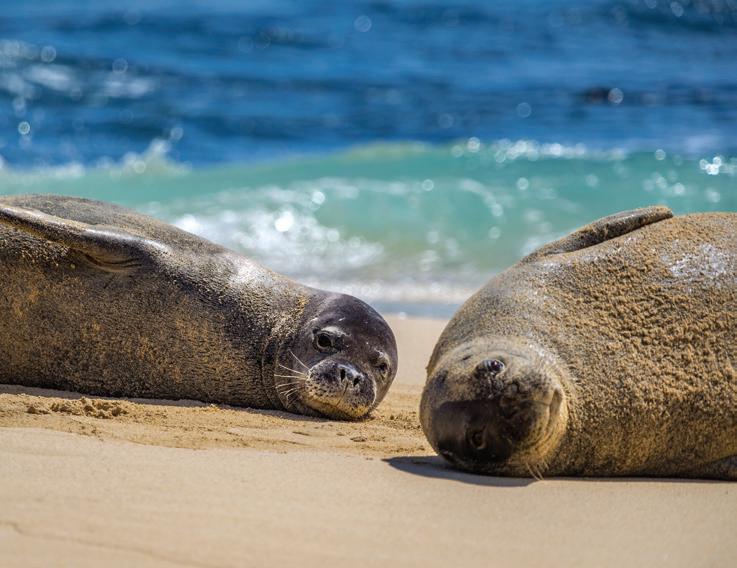
MARINE WILDLIFE
2 Celebrating a Global Ambassador for Animal Welfare
ANIMALS IN LABORATORIES
6 Animal Experimentation Under the Trump Administration: The Good, the Bad, the Ugly
8 Highlights from Recipients of AWI Implementing Refinement Grants
COMPANION ANIMALS
10 Helping Unhoused Pets and Their People Find Shelter
11 AWI Awards NIBRS Research Grant to St. Louis Student
11 Georgia Joins List of States that Include Pets in Protection Orders
FARMED ANIMALS
22 Stifling Scrutiny to Stymie Reforms
22 Torching Local Efforts to Prevent Barn Fires
23 Rising Tide of US Opposition to Octopus Farming
23 Fed Bill Aims to Force-Feed States with Factory Farm Products
24 AWI Report: Absence of Enforcement Is Compounding the Cruelty at American Slaughter Plants
HUMANE EDUCATION
28 AWI Salutes New Class of Animal-Focused Academicians
12 Will Japanese Protectionism Sink Icelandic Whaling?
13 Another OSHA Fine Spotlights SeaWorld Safety Issues
13 Whale-Safe Fishing Gains Ground in Southeast Seas
13 Dolphin-Dooming Barataria Bay Project Halted
14 Marine Science Cast Adrift as Agency Staff Tossed Overboard
TERRESTRIAL WILDLIFE
16 Trump Administration Seeks to Slash Habitat Protections for Endangered Wildlife
17 Monitoring Salt Marsh Harvest Mice via Novel, Noninvasive Genetic Surveys
18 Executive Order Opens America’s Forests to Unchecked Logging
18 Study Shows Steep Decline in US Butterfly Population
19 Colorado Cracks Down on Wildlife Trafficking
20 CEQ Guts NEPA by Rescinding Regulations
GOVERNMENT AFFAIRS
4 Budget Bills Threaten to Shortchange Animal Protection
5 Captive Primate Safety Act Reintroduced
5 First-Ever Congressional Wild Horse Caucus Established REVIEWS
26 Slither
27 The Ellesmere Wolves
27 Who Will Let the Dogs Out
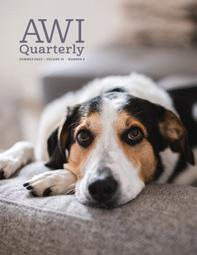
ABOUT THE COVER
Over a quarter million people in the United States are experiencing unsheltered homelessness. Research suggests up to one-fourth of them may have pets—animals whose love and companionship can provide invaluable emotional support in times of crisis. Having a pet, however, can also limit access to shelter services. AWI wants to change that. In 2011, we launched our Safe Havens for Pets directory of sheltering resources for domestic violence survivors with pets. An expanded directory now includes sheltering resources for unhoused individuals with pets as well. Turn to page 10 to learn more. Photograph by Raquel Arocena Torres.
BUDGET BILLS THREATEN TO SHORTCHANGE ANIMAL PROTECTION
It was a chaotic first few months for the 119th Congress, as lawmakers attempted to pass spending bills to avert a government shutdown while the Trump administration began moving to cut staff and funds for agencies that administer critical programs. Congress passed several temporary funding measures for the 2025 fiscal year, which began October 1, 2024, before adopting a continuing resolution to fund the government through September 30, 2025. Now Congress is simultaneously trying to pass a budget reconciliation bill while working out appropriations for the 2026 fiscal year. The White House provided limited input in the form of a “skinny” (i.e., broadbrush) budget proposal that, as details would later reveal, envisioned deep cuts that would inflict serious damage to multiple agencies and programs important to animal welfare.
In our ongoing efforts to ensure the continuation of critical programs, AWI has submitted testimony to House and Senate appropriations committees requesting funding for crucial animal welfare activities, including Animal Welfare Act (AWA), Horse Protection Act (HPA), and Endangered Species Act (ESA) enforcement; Protecting Animals With Shelter (PAWS) grants to assist domestic violence survivors with pets; and the work of the National Oceanic and Atmospheric Administration, the Marine Mammal Commission, the John H. Prescott Marine Mammal Rescue Assistance Grant Program, and the Unusual Mortality Event Contingency Fund (used to investigate and respond to marine mammal strandings). We also urged legislators to increase oversight of mink farming, block imports of sporthunted African elephants and lions, and restrict the use of body-gripping traps in national wildlife refuges.
On agricultural issues, AWI is advocating inclusion of language in FY26 appropriations bills pertaining to Humane Methods of Slaughter Act (HMSA) enforcement, oversight of poultry slaughter, third-party certification of animal-raising claims, and development of more effective and humane methods of depopulation (killing entire flocks or herds—e.g., for disease control) to counter the widespread use of ventilation shutdown plus heat, a method that inflicts tremendous suffering.
To further raise the profile of these requests to appropriators, AWI has generated support through bipartisan sign-on letters. House and Senate letters, led by Reps. Mike Quigley (DIL) and Christopher Smith (R-NJ) and Sen. Ron Wyden (D-OR), respectively, addressed a variety of animal welfare issues, including AWA, HPA, and HMSA enforcement; PAWS funding; and the use of nonanimal alternatives in research and testing. Rep. Ro Khanna (D-CA) led a letter, signed by 46 representatives, emphasizing the need for improved disaster planning on livestock operations, given the
staggering losses caused by extreme weather events and natural disasters. AWI also garnered lawmaker support for letters related to several other issues noted above, including mink farming oversight, hunting trophy imports, trapping in wildlife refuges, ESA implementation, and marine mammal protection.
In the equine arena, 126 representatives and 28 senators joined House and Senate letters—led by Reps. Vern Buchanan (R-FL) and Jan Schakowsky (D-IL) and Sen. Ben Ray Lujan (D-NM), respectively— requesting that the appropriations bills include language permanently blocking the operation of horse slaughter facilities in the United States. Reps. Dina Titus (D-NV) and Steve Cohen (D-TN), joined by 81 representatives, and Sen. Cory Booker (D-NJ), joined by 16 senators, sent letters urging key reforms to the management of federally protected wild horses and burros to ensure their humane treatment. Alarmingly, the president’s FY26 budget proposal omits long-standing prohibitions against the commercial destruction
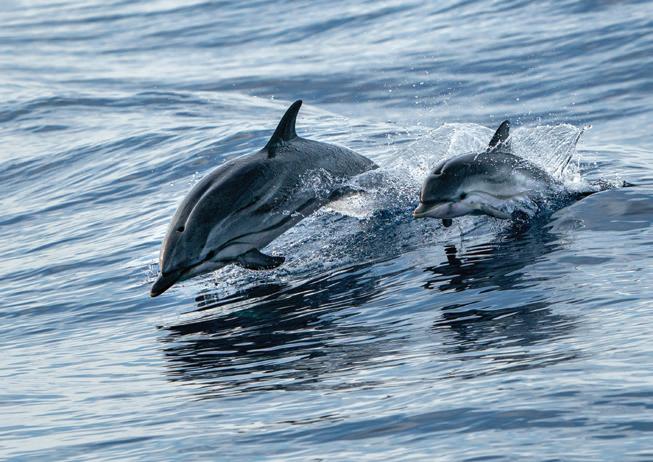
and lethal control of these animals. The budget also proposes to allow large-scale transfer of wild equines to foreign countries, which could lead to horses and burros being slaughtered abroad. We are working with our congressional allies to ensure that appropriations legislation continues to prohibit the killing of wild horses and burros en masse.
CAPTIVE PRIMATE SAFETY ACT REINTRODUCED
On May 5, the Captive Primate Safety Act (CPSA) was reintroduced in Congress. This bipartisan bill, sponsored by Sen. Richard Blumenthal (D-CT) and Reps. Mike Quigley (DIL), Brian Fitzpatrick (R-PA), Julia Brownley (D-CA), and Nancy Mace (RSC), would ban the private possession of nonhuman primates. Even the most well-meaning owner cannot provide the special care, housing, diet, socialization, and maintenance that chimpanzees, capuchins, lemurs, and other primate species require. Many pet primates spend their entire lives in relative isolation, compared to living in the wild in large social groups. They experience physical and psychological suffering when confronted with unrealistic expectations that they will behave like perfectly trained pets or even “little humans.” These animals pose a serious threat to the people around them, as evidenced by the hundreds of reported injuries nationwide over the last few decades. Primates can also carry life-threatening diseases that are communicable to humans, including Ebola, tuberculosis, and the Herpes B virus.
On May 14, AWI and other groups organized a Capitol Hill screening of Chimp Crazy. The four-part docuseries, which premiered last year on HBO Max, highlights some of the heart-wrenching stories of chimpanzees caught up in
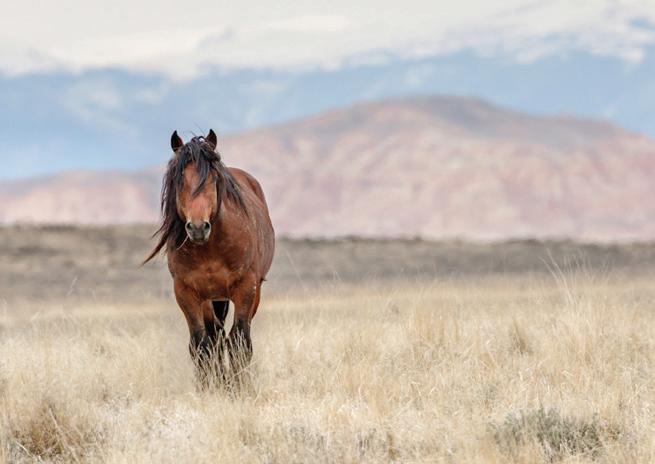
the pet trade. Featuring remarks from a former pet primate owner, the event helped educate congressional staff about the brutal realities of the pet primate trade and reinforced the urgent need to pass the CPSA.
FIRST-EVER CONGRESSIONAL WILD HORSE CAUCUS ESTABLISHED
In exciting news, the bipartisan Congressional Wild Horse Caucus was established in May—the first caucus dedicated to preserving and protecting America’s cherished wild horses and burros. Led by Reps. Dina Titus (D-NV), David Schweikert (R-AZ), Steve Cohen (D-TN), and Juan Ciscomani (R-AZ), the caucus will serve as a vital forum in Congress to advance humane policies regarding the treatment of wild horses and burros across the country. AWI has already worked with the Democratic and Republican co-chairs of this new caucus and those of the Congressional Animal Protection Caucus on a letter asking Appropriations Committee leadership to maintain key protections
against slaughter and lethal population control of wild equines.
AWI looks forward to continuing to work with theses co-chairs—all stalwart champions of wild equine protection—on reforming the federal government’s deeply flawed management of these animals and growing the new caucus’s membership. Please ask your representative to join the Congressional Wild Horse Caucus!
TAKE ACTION: Please visit AWI’s Action Center (awionline.org/actioncenter) to urge your members of Congress to defend vital animal welfare laws and the agencies that enforce them, maintain wild equine protections, cosponsor the Captive Primate Safety Act, and more. They need to know how deeply you care about animal welfare!
Animal Experimentation Under the Trump Administration: The Good, the Bad, the Ugly
Two agencies within the US Department of Health and Human Services have announced plans to move away from the use of animals in research and testing and transition toward nonanimal models. These announcements, however, came in the midst of a widespread effort by the Trump administration to drastically reduce the federal workforce and cut funding for scientific research—moves that will make the transition to nonanimal models much harder to achieve. In this article, AWI examines the ramifications of these actions for animals in laboratories.
The good: Plans to reduce animal experimentation
On April 10, the US Food and Drug Administration announced it would phase out animal testing for certain drug studies. The agency published a roadmap that outlines a sixprong approach to reducing toxicity testing in animals over the next three years and six scientific and technical steps for the agency to adopt nonanimal research models. Later that month, the National Institutes of Health announced its own initiative to “prioritize human-based research technologies” and “reduce [the] use of animals in NIH-funded research.” It intends to establish an Office of Research Innovation, Validation, and Application to coordinate these efforts and expand infrastructure for nonanimal research approaches.
The latter announcement was otherwise short on details, but most NIH-funded studies involve “basic” research— exploratory studies meant to advance general scientific knowledge, such as understanding the progression of disease. Nonanimal methodologies, unfortunately, are still in the early phases of development for this type of research. The FDA, by contrast, conducts animal testing to gauge the safety of drugs and other products for human use. In this realm, nonanimal methodologies are much more advanced.
The bad: Mass layoffs at federal agencies
Such plans would be very welcome news if not for the fact that the Trump administration is also in the process of gutting the very agencies responsible for such transitions. It has purged nearly 20 percent of the FDA workforce—including top officials in charge of reviewing new drugs—and an estimated one-eighth of the NIH staff have been fired or pushed out. The situation is beyond grim, according to a longtime NIH researcher quoted in Science: “However bad everyone on the outside thinks it is, it is a million times worse. They’re dismantling and destroying everything.”

Nine editors-in-chief of European toxicology journals coauthored an article in the journal Regulatory Toxicology
and Pharmacology (Van den Berg et al., 2025) expressing alarm over the workforce reductions at US scientific agencies. Several of these editors’ journals are specifically dedicated to advancing research on nonanimal methodologies for toxicity testing—efforts they emphasize could be impeded by the loss of senior staff at US agencies. In fact, they say, the layoffs “pose a threat to the very foundation of regulatory science and the safeguarding of public welfare and environmental health and thus will impact negatively on the safety of food, water, air and medicines for every American.”
Mass staff reductions are occurring at the US Department of Agriculture as well. The department has a long history of failing to adequately enforce Animal Welfare Act compliance by laboratories, breeders, and other entities—due in part to insufficient staff. Continued layoffs and emphasis on deregulation will only exacerbate this issue, further diminishing protections for animals in research.
The ugly: Slashing scientific research funding
The Trump administration is also determined to drastically cut research funding by capping, canceling, or delaying funds provided by national funding agencies. At the time of writing, approximately 3,000 already-approved NIH and National Science Foundation grants have been terminated. Meanwhile, new NIH grant applications are processing at half the historical rate, and the NSF stopped awarding new grants altogether. Further, the agencies announced they would be capping “indirect costs” at 15 percent, although so far this effort has been blocked by courts. These largely administrative and facility costs added to grants go toward “keeping the lights on.” At many institutions, some percentage of these go toward animal welfare-related expenses, such as enrichment programs, facility upgrades, ethical review of study protocols, semiannual inspections, and animal care staff salaries. Over the past decade, the indirect cost rate has averaged nearly 28 percent, though at some institutions, the rate is much higher. Many researchers say that a reduction to 15 percent would debilitate research institutions and potentially result in mass euthanasia of animals.
In addition, the administration announced that dozens of universities are currently “under investigation,” and it has already frozen or canceled billions of dollars in federal funding to several of those universities for failing to comply with the administration’s demands, which vary from institution to institution. Research at Harvard’s Wyss Institute, responsible for pioneering organ-on-achip technology that can replace animals in tests and experiments, is one casualty of the funding freeze.
Thus far, $9.5 billion in research grants have been terminated, and further cuts are planned. The administration’s 2026 budget proposal seeks to cut scientific funding across the board, including reducing NSF and NIH budgets by approximately 55 and 40 percent, respectively. A recent Institute for Macroeconomic and Policy Analysis report concluded that even a 25 percent cut to public research spending would reduce the GDP by 3.8 percent—comparable to the decline during the Great Recession.
The fallout
The Trump administration’s actions suggest it is working at cross-purposes: It proclaims a mission to advance science through nonanimal methods while simultaneously slashing funding for research—including for nonanimal methods. If it also seeks to reduce animal suffering, decimating resources for their protection and care runs directly counter to that goal.
AWI strongly supports a transition away from the use of animals in experimentation, but this must be done in a manner that does not leave animals and people in the dust. Broad cuts to research without allocating funding for rehoming eligible animals will, in the short term, result in severely compromised welfare and mass euthanasia of animals currently housed in laboratories. In the long run, research using animals will be reduced, but not because nonanimal methods will have dramatically advanced in that time. Instead, it will largely be due to a reduction in research as a whole—including studies focused on public health, medicine, and species and ecosystem conservation, affecting an untold number of people and animals. As a science-based organization committed to advancing the welfare of all animals, AWI urges more thoughtful solutions.
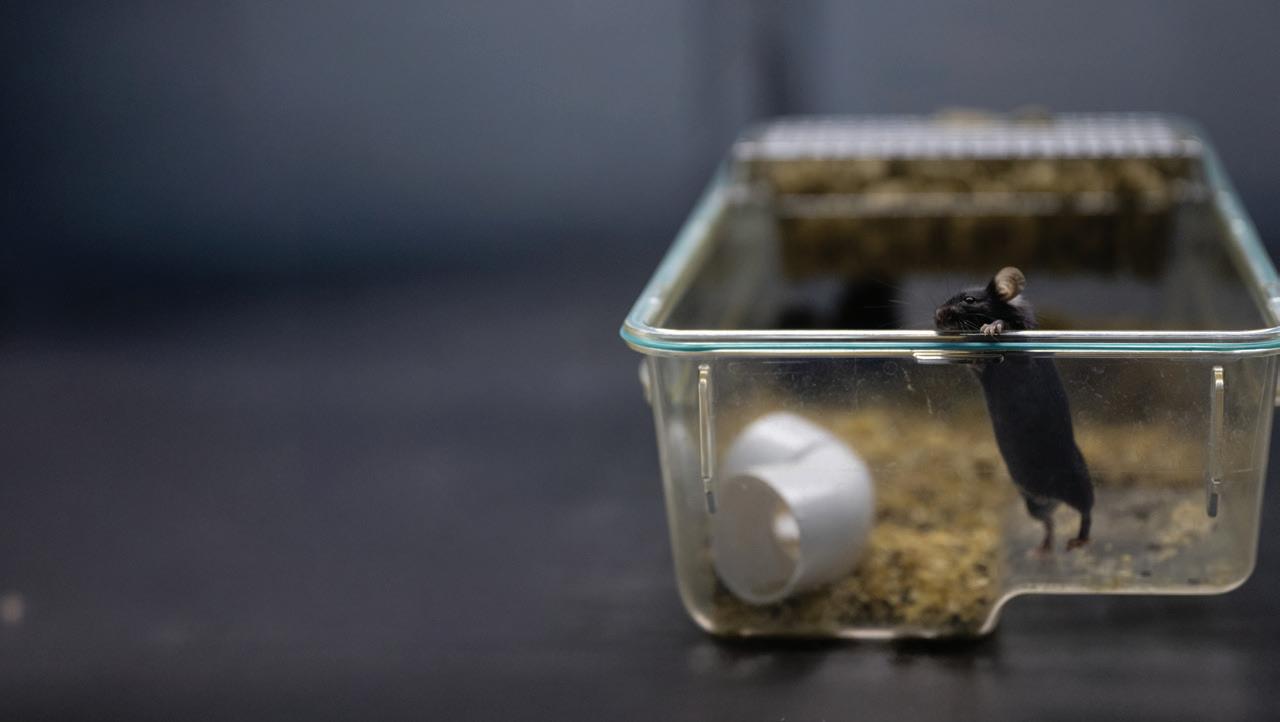
Highlights from Recipients of AWI Implementing Refinement Grants
Refined Mouse Handling
The objective of this project was to introduce tunnel handling—a non-aversive alternative to tail handling—to mice during husbandry and routine handling procedures across a large facility with approximately 12,000 mouse cages. The grant allowed us to purchase clear, square-shaped tunnels and to compensate two staff members to develop a three-phase approach and train 350+ other staff and researchers in tunnel handling.
Phase 1 focused on pilot testing the tunnels in 50 mouse cages. The objectives of this phase were to modify existing husbandry procedures, develop training strategies for staff, and identify potential challenges. Feedback from this phase led to the addition of wooden gnawing blocks to discourage tunnel chewing and to refinements in tunnel placement and cleaning procedures.
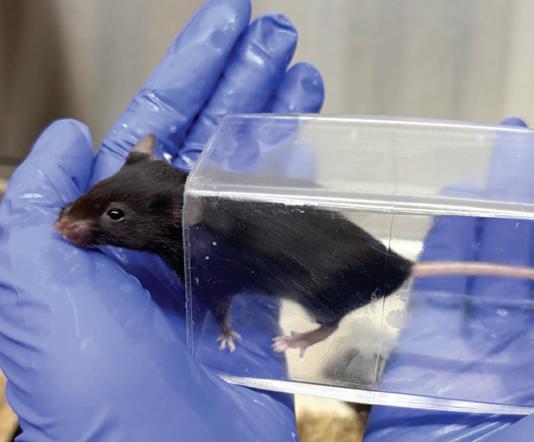
Phase 2 expanded the methods to a larger breeding colony with over 100 cages. We further refined training protocols for research staff and were able to assess the broader applicability of this method to both pups and juveniles.
Phase 3 was the most extensive phase of implementation, as it included training for all animal facility and research personnel and the successful, widespread adoption of tunnel handling with all mouse cages.
The implementation of non-aversive handling techniques at our facility represents a major advancement for both animal welfare and research quality and sets a new standard for ethical research practices at McGill University.
by Anna Jimenez, veterinary care manager, and Dr. MarieChantal Giroux, director of veterinary and technical services, at McGill University
“Free-Range” Housing for Rats
The aim of our project was to keep the university’s training rats (i.e., those used to train research personnel in handling, injections, and anesthesia) in a “free-range” housing system to provide the animals with more space, choice, and behavioral flexibility compared to traditional cages. The grant allowed us to furnish the playroom and compensate two staff members to develop a positive reinforcement training program that would allow the rats to be caught, when needed, in a low-stress fashion.
The enclosure consisted of a repurposed wire netting aviary (~10.6 m3). The floor was covered with recycled paper bedding and the space furnished with running wheels, litter boxes, climbing structures, and chewing enrichment (e.g., cardboard). This enclosure did allow for a wider behavioral
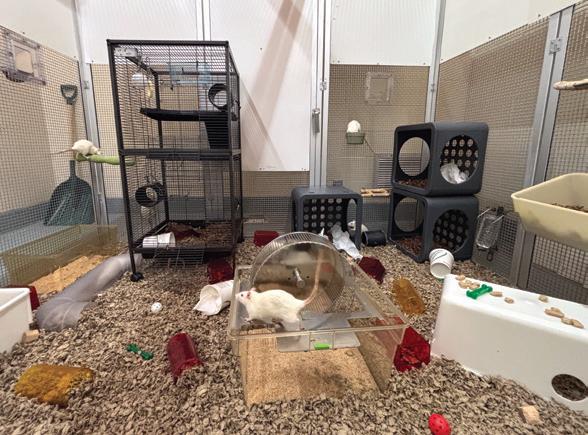
repertoire than standard cages, including climbing, locomotor play, and group rough-and-tumble play.
With stepwise positive reinforcement to handling and capture, the rats voluntarily approached personnel (including strangers) and entered a designated handling area. Switching to a reverse light cycle (i.e., husbandry activities during the dark phase) greatly increased the rats’ motivation to engage with personnel, enter the handling area, and earn food rewards.
After the initial six-month implementation period, the time required for daily husbandry activities for the free-range system was similar to that for standard cages. The rats were litter trained, which greatly simplified cleaning. Personnel found the training process and human-animal interactions rewarding. Future modifications will include more climbing and resting opportunities that make better use of the vertical space in the middle of the enclosure.
by Dr. Sarah Baert, clinical veterinarian, and Michaela Randall, registered laboratory animal technician, at the University of Guelph
Physical Therapy for Animals at a Veterinary School
The aim of the physical therapy program is to reduce muscle atrophy and increase psychological stimulation among dogs, cats, and horses used for teaching at the university’s veterinary school. The grant allowed us to purchase exercise equipment and hire animal rehabilitation specialists to get us started.
Some dogs are really easy to work with and learn quickly, but others are more anxious—at the beginning, even putting their paws on the balance pads was challenging for them. We
learned to work with each dog at their own rhythm, and we saw that positive reinforcement training helped staff build a better relationship with the animals. At first, only university staff worked with the dogs, but more recently, we decided to offer the opportunity to students too. We are confident that we will be able to reach our goal of doing physical therapy at least once a week for the dogs and will see the expected results in terms of muscle mass development.
Our main goal for cats was to provide a lot of enrichment and toys so that they could exercise by themselves. We observed that some cats use them, but not the older cats, who usually prefer to sleep! So, we also try to add active playtime with staff every month.
Work with the equine colony only started this past fall. We are focusing on horses who need it the most (2–3 times per week). We are already starting to see a difference in the horses’ muscle mass and a lot more enthusiasm when we go get them for their training!
by Dr. Kathy Lapointe, clinical veterinarian at the University of Montreal
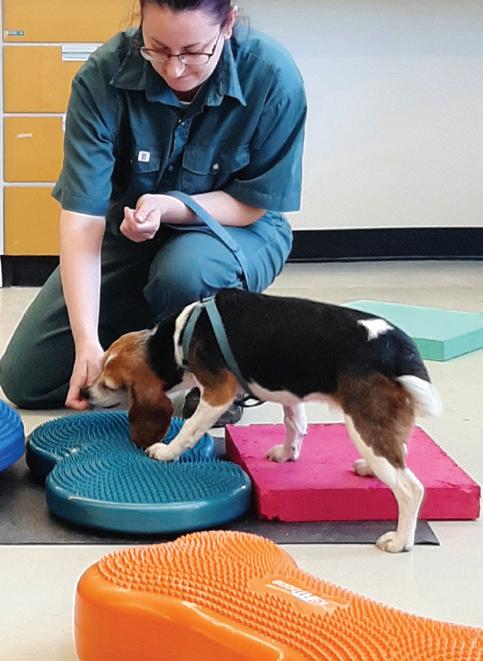
Helping Unhoused Pets and Their People Find Shelter
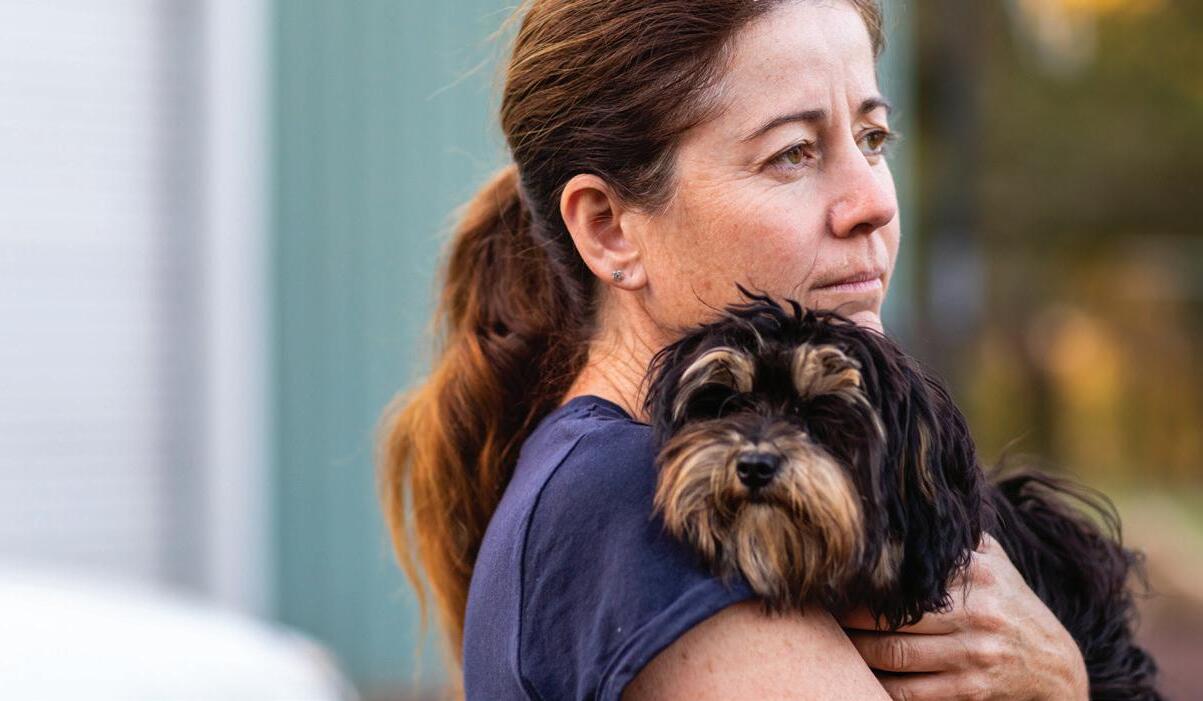
AWI is pleased to announce that its Safe Havens for Pets directory has expanded to include pet-friendly sheltering resources for individuals who are experiencing homelessness with a companion animal. In 2011, AWI established the Safe Havens for Pets directory to help domestic violence survivors with pets find sheltering resources for their animals while seeking safety for themselves. The directory is now accessed tens of thousands of times each year by survivors and advocates working to ensure their safety, and the Safe Havens for Pets program has grown to include vital resources for professionals working with people and pets in crisis.
Pets can provide numerous physical and mental health benefits to individuals experiencing housing insecurity. However, having a pet can also create an additional barrier for those seeking shelter. Many people choose to remain unhoused rather than relinquish custody or leave their pets behind when entering a shelter. In a 2016 survey conducted by the National Alliance to End Homelessness, 22 percent of unhoused individuals reported that they avoided entering shelters because they were not allowed to bring their pets. With the number of people experiencing unsheltered homelessness in the United States steadily increasing, reaching a record 256,610 in 2023 according to federal data, access to pet-friendly shelter is critical.
Until recently, there were no nationwide directories of safe havens that offer sheltering resources for people experiencing homelessness with a pet. With the expansion of the Safe Havens for Pets directory, more than 200
programs for unhoused individuals, across 50 states, were added to the nationwide database, offering a clearer picture of available options. The directory, which is searchable by zip code and updated regularly, features organizations that either offer sheltering services for the animals of unhoused individuals and/or domestic violence survivors, have a relationship with an entity that does, or provide referrals to such programs. In addition to domestic violence and/or homeless shelters that house people and pets together, the safe havens network includes animal welfare groups, foster coalitions, and boarding facilities.
The Bridge Homeless Recovery Shelter in Dallas is one of more than 1,200 listed entities that strive to remove as many barriers as possible for people seeking shelter with pets. The Bridge is the only homeless recovery shelter in the Dallas area with an on-site kennel. Its other on-site resources for unhoused individuals with companion animals include a large exercise yard, enrichment activities, pet supplies, veterinary care, and behavioral training courses led by a certified dog trainer.
“Domestic violence survivors and unhoused individuals with pets often face upheaval, uncertainty, and the unimaginable feeling of having to choose between safe shelter and their pet—a choice no person should have to make,” said Claire Coughlin, director of AWI’s Companion Animal Program. “AWI is proud to highlight the critical work these programs are doing to care for people and pets in crisis and to offer the Safe Havens for Pets directory to help individuals locate these safe sheltering resources nationwide.”
AWI AWARDS NIBRS RESEARCH GRANT TO ST. LOUIS STUDENT
Following an open call for proposals, AWI’s Center for the Study of NIBRS Animal Cruelty Data has selected Abigail Schweiger, a doctoral student from St. Louis University’s School of Social Work, as the recipient of its first NIBRS Animal Cruelty Data Research Award. This grant program, targeting master’s and doctoral students who are interested in analyzing animal cruelty data as part of their research, was designed to promote innovative research that analyzes animal cruelty data and informs prevention and intervention efforts.
The aim of Schweiger’s project, entitled “Profiles of Animal Abusers in the United States: New Evidence from the NIBRS,” is to advance the understanding of animal cruelty offenses by identifying distinct offender profiles based on sociodemographic and offense-related variables. Using a cluster analysis statistical approach, this project will build on existing findings by addressing several underexplored areas in the study of animal cruelty, including the identification of offender subgroups and the relationship between offender characteristics and types of cruelty.
Funding provided by AWI will go toward analysis of animal cruelty data, a written report of the results, and the dissemination of findings to key stakeholders, including law enforcement agencies, policymakers, and animal welfare organizations. With the goal of strengthening intervention strategies, improving enforcement
of animal cruelty laws, and informing more effective animal welfare policies and practices, the Center for the Study of NIBRS Animal Cruelty Data looks forward to providing funding opportunities like this on a regular basis. For more information on this award, please visit awionline.org/nibrs-award
GEORGIA JOINS LIST OF STATES THAT INCLUDE PETS IN PROTECTION ORDERS
In surveys of domestic violence survivors, as many as 48 percent have indicated that they delayed leaving a dangerous situation because they had no way to keep their pets safe. When survivors do leave a violent relationship, many seek protection orders. Recognizing the importance of protecting companion animals, more than four out of five US states nationwide have now enacted laws allowing for their inclusion in such orders.
Georgia is the latest state to pass such a statute, bringing the total to 42 states, along with the District of Columbia and Puerto Rico. Although pet protection
statutes vary from one state to another, they commonly allow courts to award custody of pets to the person seeking the order and/or direct the abuser not to harm the pets, and may authorize law enforcement to assist in safe retrieval of pets. The Georgia law, which goes into effect on July 1, allows courts—in both family violence and dating violence protection orders—to award “care, custody, and control” of all household pets to the person seeking the order and order the abuser to refrain from harming, harassing, or concealing the pets.
Allowing for the inclusion of pets in protection orders is a critical step in breaking down barriers to safety and protecting survivors and their companion animals. The next vital step after passage of these laws is to ensure that domestic violence survivors and their advocates are aware these protections exist. AWI offers state-specific guides to help survivors and professionals learn about the protections available in their state and how to obtain them. A guide for Georgia is forthcoming.
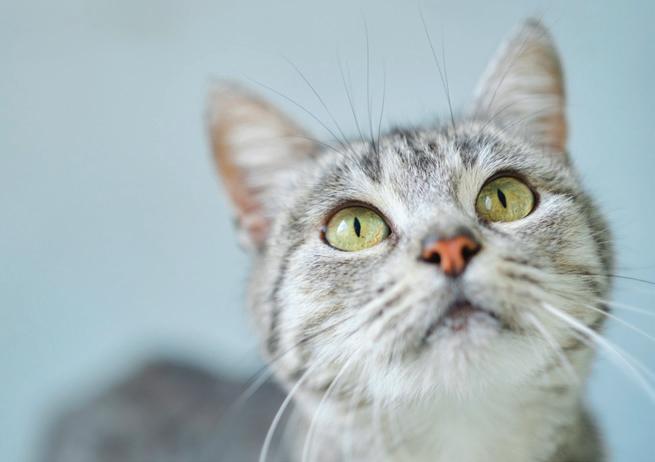
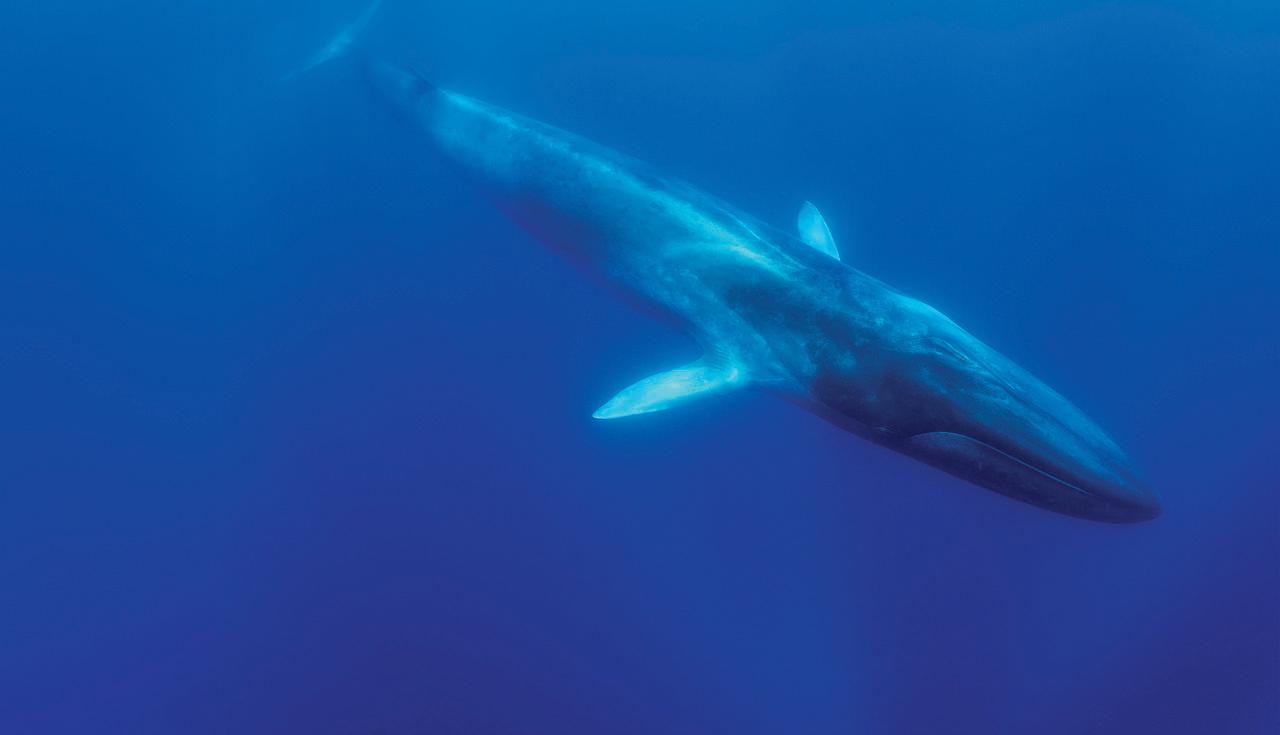
Will Japanese Protectionism Sink Icelandic Whaling?
This year’s commercial whaling season began in April with the first kills by Norway and Japan. Although Norway’s quota allows up to 1,406 minke whales in total to be killed by the 15 registered whaling vessels, fewer are expected to be taken. Kyodo Senpaku, Japan’s only factory ship whaling company, will kill up to 56 sei whales, 153 Bryde’s whales, and 60 fin whales (the second largest animal on the planet). In addition, five small Japanese coastal whaling boats will kill up to 144 minke whales.
Meanwhile, Iceland’s killing season, which usually begins in June, will look very different this year. The lone minke whaling company licensed to date is expected to fall far short of the 217 quota set for that species, while Hvalur hf.—Iceland’s largest whaling company and the only one to hunt fin whales—announced it will not hunt at all this season. Hvalur cited challenges with the Japanese market, where it had hoped to sell thousands of tons of meat and blubber from up to 209 fin whales. Its decision underscores a stark reality for the whaling industry in each of the three remaining commercial whaling nations: Demand for whale meat is declining rapidly, and unless they can overturn the four-decades-long prohibition on international trade in whale meat implemented by the Convention on International Trade in Endangered Species of Wild Fauna and Flora (CITES), they can only trade legally with each other.
Hvalur sells almost all its catch to Kyodo Senpaku, making it highly vulnerable to cratering demand in Japan, the financial instability of its buyer, and the Japanese government’s protectionism on behalf of domestic whalers. In 2022, the government provided more than US$50 million in subsidies, grants, and interest-free loans to the Japanese whaling industry, but it refused to subsidize Kyodo Senpaku’s massive whale meat imports from Iceland. Apparently, the government is willing to continue propping up Japanese whaling for now, but it no longer appears willing to underwrite Iceland’s industry too.
Nevertheless, an undeterred Kyodo Senpaku—which felt that higher volumes of meat were needed to stimulate consumer demand—secured private loans in 2023 to buy Iceland’s catch. Two years later, however, prices and demand remain stagnant in Japan, and most of the 2,500 tons of meat imported from Hvalur that year remains unsold, costing the Japanese company an estimated US$700,000 thus far in warehouse fees.
Hvalur, for its part, had been hoping that recent marketing efforts in Japan would boost consumer interest there, making it worthwhile for the company to go whaling this year. This hope was dealt a severe blow in October 2024: Kyodo Senpaku, now struggling even to sell Japanesecaught whale meat and facing revenue losses of up to 20 percent while it pays off its loans, announced that it would not import meat from Iceland this year.
AWI’s research shows that the number of restaurants selling whale meat in Japan has declined by around 50 percent since 2021. This trend, combined with Japan’s bloated subsidizing of its own industry, poses an existential threat to Hvalur that may prove hard to overcome. A similar challenge could await Norwegian whaling companies looking to increase sales to Japan to offset low demand in Norway.
ANOTHER OSHA FINE SPOTLIGHTS SEAWORLD SAFETY ISSUES
A SeaWorld Orlando trainer was injured while handling an orca in the park’s medical pool in September 2024. The injury (rumored to be a broken arm, but never confirmed by media) was serious enough to trigger an investigation by the Occupational Safety and Health Administration. On March 21, OSHA issued a “serious citation” under the “General Duty Clause” of the Occupational Safety and Health Act— which requires employers to provide a safe working environment—and levied a $16,550 fine.
SeaWorld has chosen to contest the citation, notwithstanding the bruising hits it took to its reputation, finances, and business model following the death in 2010 of trainer Dawn Brancheau (a story recounted in the 2012 book Death at SeaWorld and the 2013 documentary Blackfish). However this latest injury-related citation is resolved, AWI firmly believes that close interactions with the ocean’s top predator can never be safe.
WHALE-SAFE FISHING GAINS GROUND IN SOUTHEAST SEAS
In March, the South Atlantic Fishery Management Council (SAFMC)—a regional body responsible for managing federal fisheries from North Carolina to Florida—met in Jekyll Island, Georgia. One item on the docket, Amendment 56, included a proposal to reopen a black sea bass fishing closure to on-demand (aka “ropeless”) fishing gear.
Black sea bass in the Southeast are traditionally fished with trap pots and vertical lines, and closures have been used since 2013 in part to protect critically endangered North Atlantic right whales from entanglement. AWI and partners submitted public comments supporting the proposal, as we have long contended that ondemand gear is the best long-term solution to prevent entanglements while maintaining fishing access. In the Southeast, years of successful at-sea trials have demonstrated that whales can coexist with black sea bass fishers using on-demand gear.
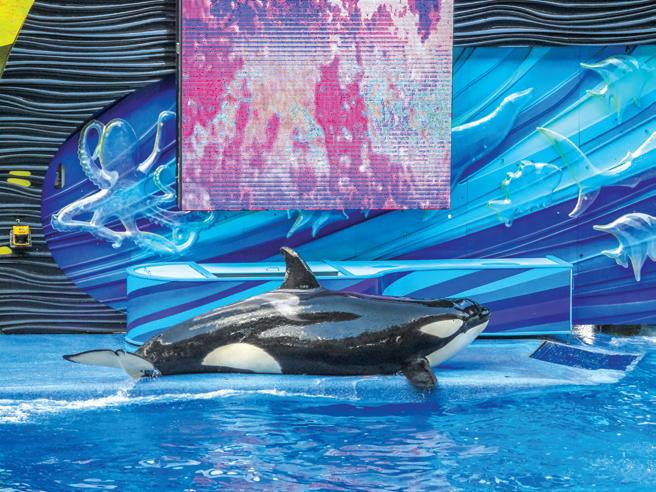
At the March meeting, the SAFMC moved Amendment 56 a step closer to full approval later this year. Last year, the council approved Amendment 36 to allow commercial use of on-demand pots for black sea bass outside closures. Amendment 56 would expand on this by allowing commercial use of ropeless gear inside a closure without a special permit. More importantly for right whales, these moves incentivize increased adoption of whale-safe gear.
DOLPHIN-DOOMING BARATARIA BAY PROJECT HALTED
For several years, AWI has opposed a project to divert fresh sediment-rich river water into Barataria Bay in an effort to restore Mississippi River Delta land lost to erosion. Delta restoration is a laudable goal, but the means chosen here would essentially eradicate the bay’s resident bottlenose dolphin population. (See AWI Quarterly, fall 2024.) These marine mammals cannot tolerate exposure to freshwater for long. The project would also displace human residents of Plaquemines Parish and destroy shellfish beds these Louisianans rely on, all to build about 20 square miles of land over the course of 50 years.
To our profound dismay, ground was broken last year on this projected $2 billion boondoggle. After costs ballooned to $3 billion, however, Governor Landry called a halt to construction to reassess the project’s scale. Then, in late April, the Army Corps of Engineers suspended the project’s construction permit, due in part to a number of irregularities with the original environmental review process. AWI had been resigned to working as best we could to mitigate the horrific impacts of this freshwater influx on the dolphins, but the population has now received a (hopefully permanent) reprieve.
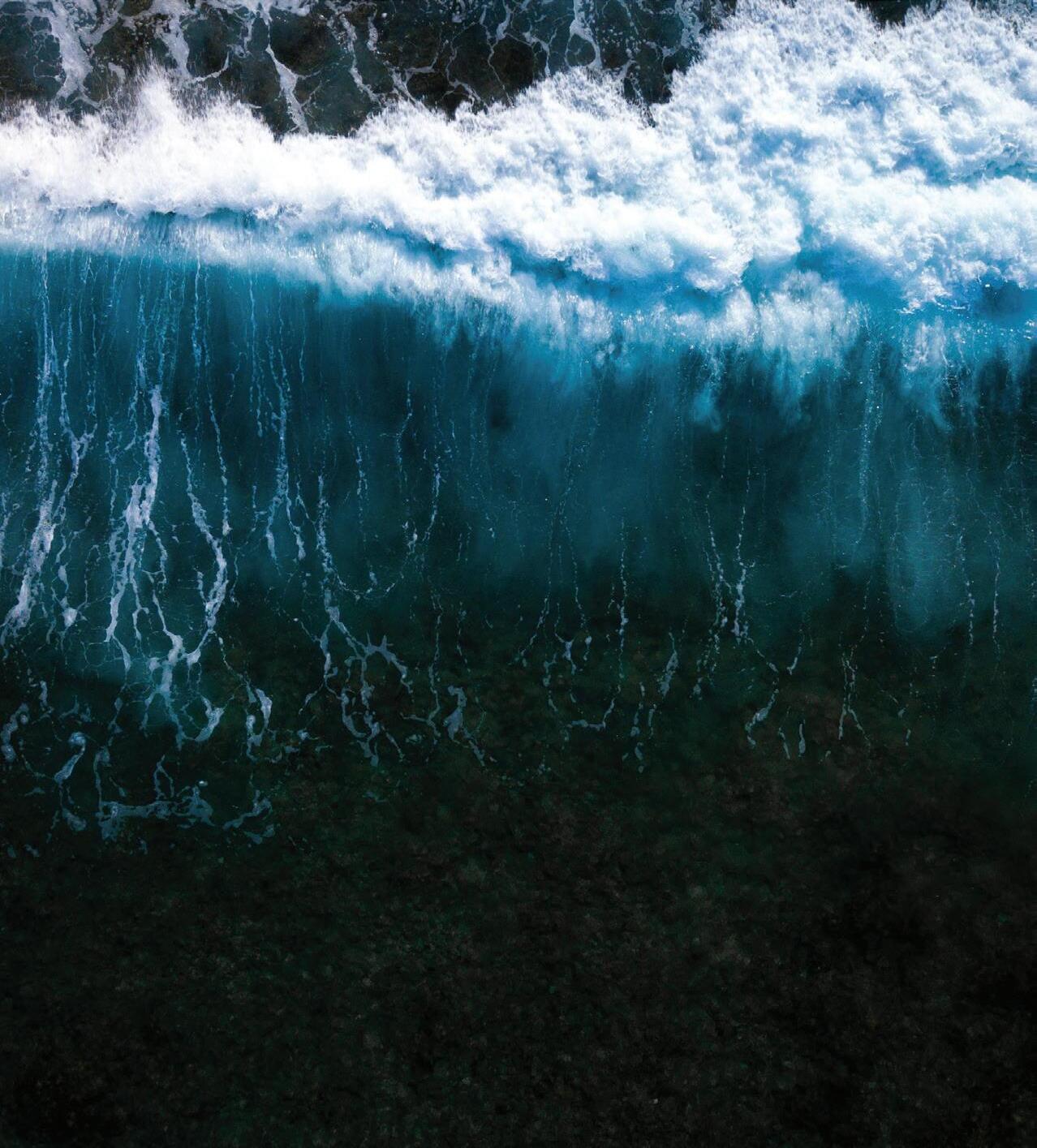
Marine Science Cast Adrift as Agency Staff Tossed Overboard
The National Oceanic and Atmospheric Administration, within the Department of Commerce, is among a host of federal agencies with science-based missions that have been rocked by deep budgetary and staffing cuts imposed by the Trump administration and its so-called Department of Government Efficiency. Similar cuts are also upending environmental science efforts at the Department of the Interior and the Department of Energy, as well as at independent agencies such as the Environmental Protection Agency, the National Science Foundation, and the Marine Mammal Commission Even departments that have lesser-known environmentaland conservation-focused offices—including Agriculture, Defense, Justice, and State—have not gone unscathed.
The blueprint for downsizing and dismantling vast portions of the federal government was initially presented in Project 2025, a 900-page policy playbook published by the Heritage Foundation in 2023. However hair-raising the plan may have appeared on paper, though, its materialization has proven far more disruptive and disheartening than most people could have imagined. The New York Times estimated that, as of mid-May, nearly 135,000 federal employees had left their posts—nearly 59,000 of whom were abruptly terminated and more than 76,000 of whom chose to accept one of the buyouts rather than face continued uncertainty
over their jobs and the future of their programs—and the administration was seeking to cut over 149,000 additional employees. Paradoxically, between lawsuits challenging the terminations and funding cuts, staff shortages that have rendered government agencies unable to accomplish mission-critical work (sometimes leading to the rehiring of fired employees), and other fallout, the results thus far have been anything but efficient.
In February and March, over 800 NOAA employees— primarily those on “probationary” status who had been in their positions at the agency less than a year or two—were dismissed. Multiple lawsuits challenged the legality of these firings. Some individuals were subsequently rehired, only to be fired again by April. NOAA’s eligible remaining staff were given a late-April deadline to accept a buyout package and told that decisions regarding a subsequent workforce reduction would depend on how many existing employees had accepted buyouts.
Although precise numbers remain unclear, it is estimated that, by April, NOAA had lost around 2,200 employees, representing approximately 20 percent of its workforce. According to a statement from NOAA’s deputy undersecretary for operations, Vice Admiral Nancy Hann, these staff departures equate to the loss of a combined
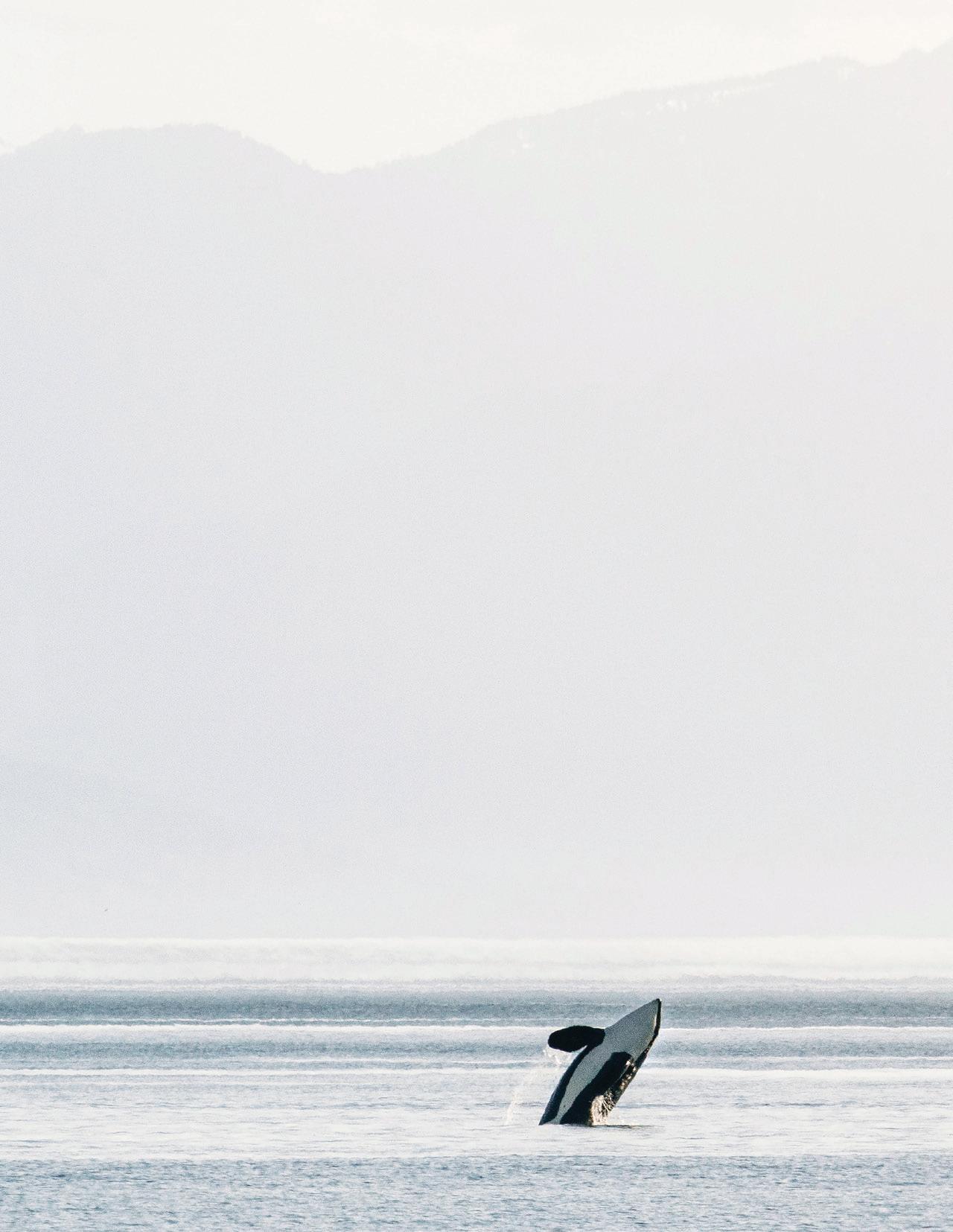
27,000 years of agency experience and expertise. Morale at the agency has understandably plummeted.
On May 2, the administration released its fiscal year 2026 budget proposal, which aims to shrink NOAA’s Operations, Research, and Facilities budget by 28 percent ($1.33 billion) via a 29 percent cut to National Marine Fisheries Service (NMFS) funding, a 50 percent cut to National Ocean Service funding, and a devastating 74 percent cut to Office of Oceanic and Atmospheric Research funding. Entire programs critical to coastal resilience, marine wildlife conservation, fisheries recovery, climate research, and ocean science are marked for elimination.
The very existence of NMFS’s Office of Protected Resources (OPR) has been threatened, with the administration floating the idea of subsuming it into the already overtaxed Ecological Services (ES) program of the Department of the Interior’s US Fish and Wildlife Service (USFWS). While both the OPR and ES play crucial roles in their respective agency’s administration of the Endangered Species Act (ESA) and the Marine Mammal Protection Act (MMPA)—laws which themselves are increasingly threatened by legislative attacks—their roles and responsibilities under these laws vary.
According to the budget proposal, consolidation of the OPR and ES under one roof (while taking a wrecking ball to what lies under that roof, as the USFWS is also among the agencies that have experienced mass firings) would be “consistent with” the administration’s “deregulatory agenda.” The administration is also prioritizing fossil fuel permitting while simultaneously ending what it refers to as the “Green New Scam”—a derisive reference to the Green New Deal, a policy initiative focused on renewable energy development as a vehicle to create economic opportunities and address climate change.
NOAA is our nation’s oldest scientific agency—the agency and its predecessors date to the 1800s. NOAA in its current form was established by Congress in 1970 under President Nixon’s
Reorganization Plan No. 4. Within a few years, landmark statutes that were enacted with bipartisan support—including the MMPA, the ESA, and the Magnuson-Stevens Fishery Conservation and Management Act—tasked NOAA with protecting marine wildlife and ecosystems from unregulated exploitation and with conserving and overseeing fisheries resources in federal waters. For over 50 years, NOAA has been working through NMFS to protect marine wildlife while promoting American industries such as commercial fishing and shipping. Now, even the commercial fisheries industry is experiencing hardships—such as delayed openings and closures—due to this massive downsizing and reduction of government support for scientific research.
The president’s budget also seeks to eliminate funding for the Marine Mammal Commission (MMC), an independent agency created by the MMPA “to provide independent, sciencebased oversight of domestic and international policies and actions of federal agencies addressing human impacts on marine mammals and their ecosystems.” Only 14 full-time staff members support the three-member MMC and its ninemember Committee of Scientific Advisors. According to the MMC chair, this small but mighty federal agency has fulfilled its statutory mission for over 50 years “at a cost of just over 1 penny per American per year.”
The draconian cuts and proposed upheavals threaten to dismantle decades of progress in ocean and climate science, marine conservation, and coastal as well as tribal community support. AWI is fighting to preserve the laws, programs, and science-based policies that are so vital to our work on behalf of marine wildlife. In addition to our impassioned advocacy in the halls of Congress, we are working within multiple NGO coalitions, submitting detailed analysis when the administration solicits public comments on proposals, and taking every opportunity to raise public awareness of these dire situations. The marine wildlife and habitat protections mandated under the MMPA, ESA, and other laws cannot be implemented unless agencies such as NOAA, the USFWS, and the MMC are well-staffed and properly funded.
Trump Administration Seeks to Slash Habitat Protections for Endangered Wildlife
In April, the US Fish and Wildlife Service (USFWS) and the National Marine Fisheries Service (NMFS) issued a proposed rule that would undermine protections for habitat that threatened and endangered species need to survive by rescinding the agencies’ decadesold definition of “harm” under the Endangered Species Act (ESA).
One of the ESA’s primary protective measures is a prohibition on the “take” of threatened and endangered species. The statute defines “take” to mean “harass, harm, pursue, hunt, shoot, wound, kill, trap, capture, or collect” such animals (or attempt to do so).
Since 1975, ESA regulations issued by the USFWS have defined “harm” in this context to include “significant habitat modification or degradation” that “kills or injures wildlife by significantly impairing essential behavioral patterns, including breeding, feeding, or sheltering.” NMFS subsequently adopted an analogous definition to implement the ESA on behalf of threatened and endangered marine wildlife. The rule proposed in April would eliminate this definition of harm from the regulations.
In adopting the definition a halfcentury ago, the agencies relied upon the statutory text and framework and clear intent of Congress to protect species and their habitats. During hearings on the bill, legislators emphasized that, of the various anthropogenic threats to species, habitat destruction was “the most significant” and “the most difficult to
control.” Thirty years ago, in Babbitt v. Sweet Home, the US Supreme Court upheld the regulatory definition, finding it to be in accordance with both congressional intent and the standard dictionary definition of the word. The definition had been upheld by lower courts prior to Sweet Home and has been applied in numerous cases since.
The agencies’ definition of harm is also underpinned by decades of rigorous ecological research and empirical evidence directly demonstrating that habitat protection and restoration are crucial for the survival and recovery of listed species. Simply put, wild animals cannot survive if the habitat they rely on for food, shelter, and raising young is obliterated. Today, habitat loss from degradation, fragmentation, and destruction is the leading cause of species imperilment
and extinction, both in the United States and around the world. With more than 1 million species globally at risk of extinction in the next few decades, including 27 percent of mammals, 41 percent of amphibians, 21 percent of reptiles, and 37 percent of sharks and rays, protecting habitat is vital to stemming the tide of extinction.
Under the proposed rule, destroying trees that birds need for nesting and rearing chicks, filling in wetlands that fish depend on for spawning, and paving over grasslands that reptiles require for foraging would no longer qualify as “harm.” If the rule is adopted, threatened and endangered species stand to lose areas vital to breeding, feeding, and sheltering, severely diminishing their ability to survive and recover. AWI submitted comments in strong opposition to this proposal, and over 4,500 AWI supporters used our action alert system to submit their own comments. In total, the administration received nearly 200,000 comments, the vast majority in opposition to this dangerous proposal. AWI will continue to engage to defend the habitat that imperiled wildlife depend on for survival.
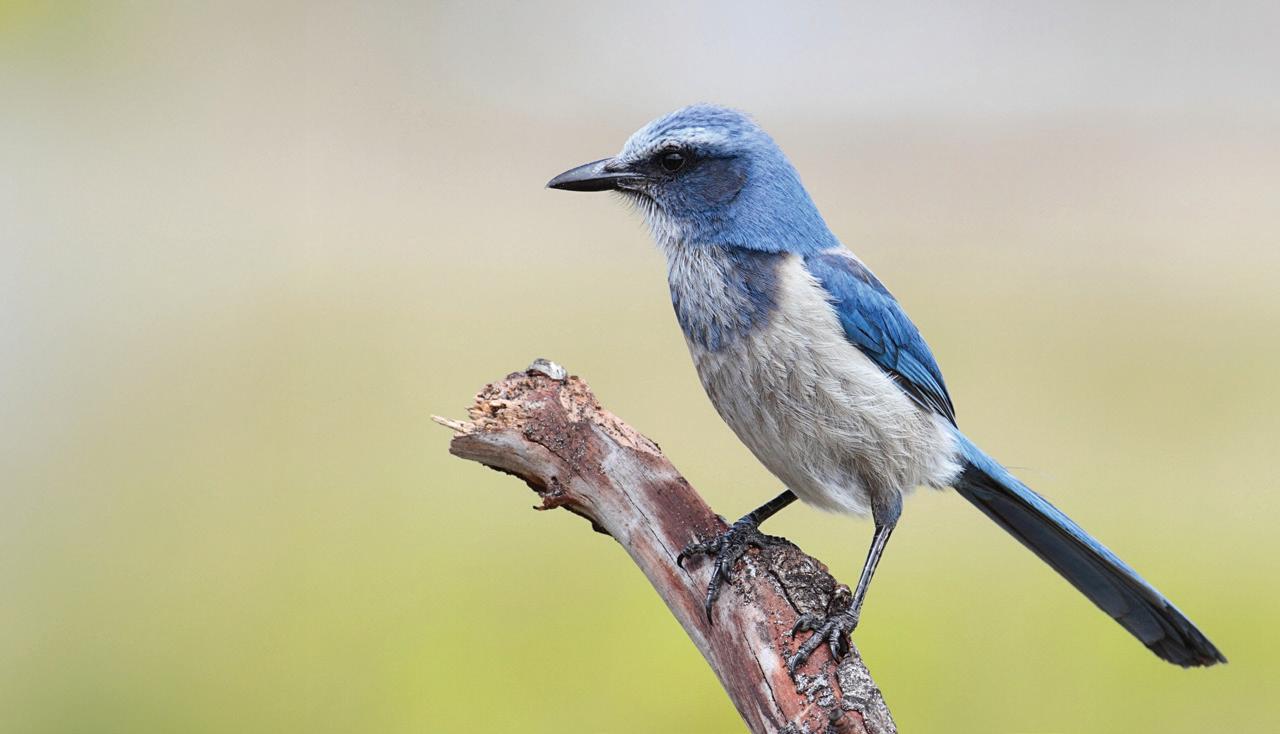
Monitoring Salt Marsh Harvest Mice via Novel, Noninvasive Genetic Surveys
by Dr. Cody Aylward and Dr. Mark Statham, Mammalian Ecology and Conservation Unit, UC Davis
The salt marsh harvest mouse is an endangered species restricted to the coastal wetlands of the San Francisco Estuary (SFE). Since the beginning of the industrial revolution, approximately 90 percent of the historical tidal marsh habitat in the estuary has been converted to urban development, salt ponds, or other land uses. Only 48 square miles of salt marsh habitat remains in the SFE, and not all of it is occupied by salt marsh harvest mice.
Understanding the extent of a species’ range is one of the most basic elements of its conservation. However, acquiring this basic information is not always easy. For salt marsh harvest mice, their range is typically assessed using livetrapping data, which can be problematic, as few individuals are permitted to trap this endangered species, and livetrapping is an exhausting effort with an inherent risk of mortality. To address these difficulties, scientists have elected to monitor a small number of sites to assess population trends over time, rather than assessing the entire species range, meaning that a significant proportion of the range has not been surveyed in decades, or ever.
Using funds from a Christine Stevens Wildlife Award, we developed a novel, noninvasive genetic approach to survey the salt marsh harvest mouse across its range, a technique that is less expensive and labor intensive, and has lower mortality risk than live-trapping. The approach used bait stations, which allowed mice to enter, eat some seeds, enjoy the cotton bedding inside, and deposit feces. We then collected the fecal pellets and subjected them to a novel polymerase chain reaction (PCR)–based genetic test (dubbed “whopoo”) that we developed in the Mammalian Ecology and Conservation Unit at the University of California, Davis, to determine which of five rodent species that occupy the SFE visited the stations.
Of the 47 marshes surveyed during the winters of 2020–21 and 2021–22, we detected salt marsh harvest mice in 24 of them. This new genetic tool was extremely effective, resulting in a 99 percent chance of detecting salt marsh harvest mice if they were present. We found that the size of surveyed
marshes and their connectivity to nearby marsh habitat were important predictors of whether salt marsh harvest mice occupied the site. We also found that several areas that were considered part of the species’ range are no longer occupied. Our results have important implications for updating the species range and guiding future conservation efforts.
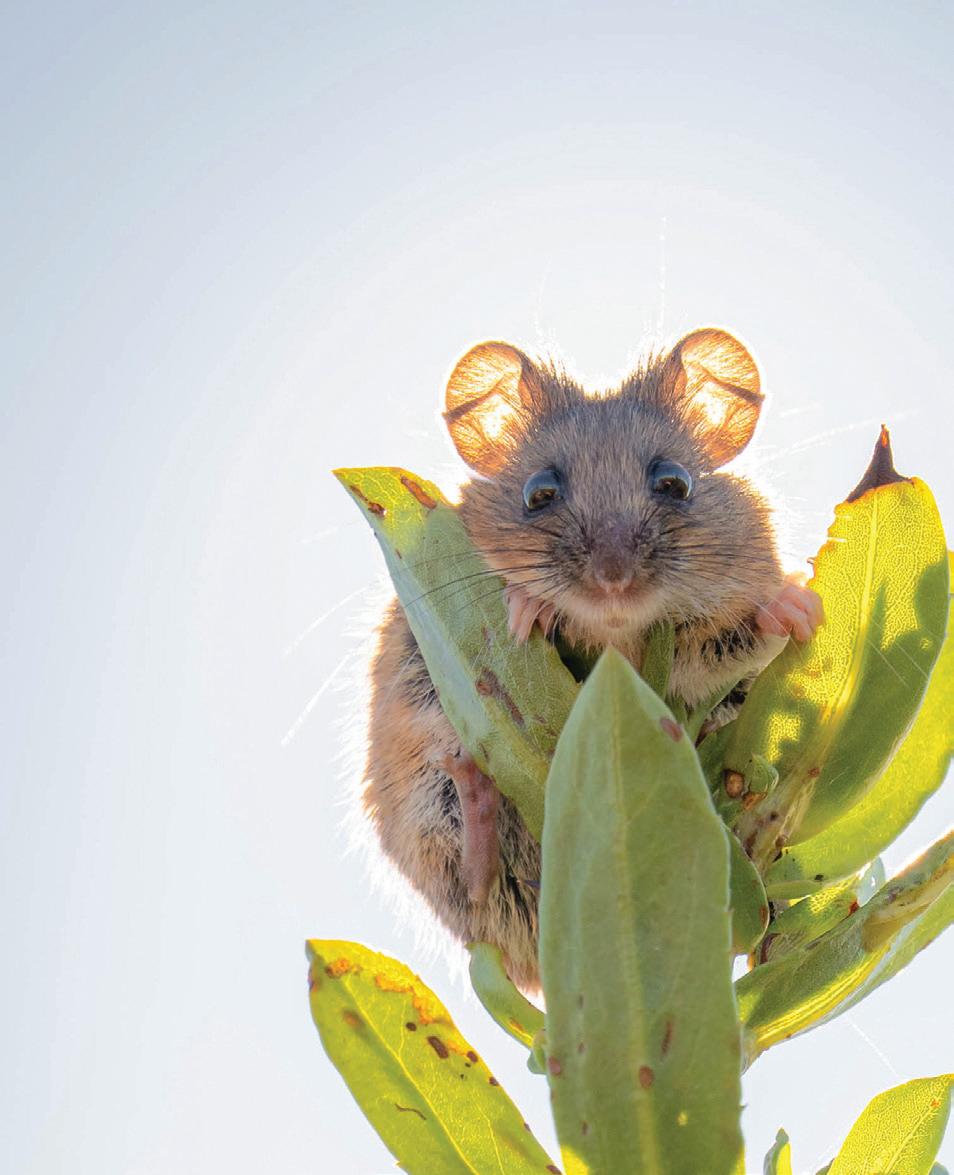
Our research demonstrates the effectiveness of noninvasive approaches to understand the distribution of this endangered species. This study has already had a positive impact on future monitoring of salt marsh harvest mice. During the summer of 2022, a multiagency range-wide survey effort used this noninvasive methodology to increase the number of sites that could be feasibly surveyed. Very few noninvasive genetic surveys for small mammals have been developed to date, and we hope that other scientists will consider similar approaches to improve the noninvasive monitoring landscape for small mammals globally.
terrestrial wildlife
EXECUTIVE ORDER OPENS AMERICA’S FORESTS TO UNCHECKED LOGGING
On March 1, President Trump issued an executive order entitled “Immediate Expansion of American Timber Production,” to massively accelerate and increase logging on US Forest Service and Bureau of Land Management lands. The USFS and the BLM manage nearly 25 percent of the nation’s forests— about 183 million acres in total, an area larger than Texas. The order will open millions of acres of old-growth and mature forests to clearcutting.
The executive order also severely undermines a key component of the Endangered Species Act (ESA). Under normal circumstances, the ESA requires the USFS and the BLM to engage in formal consultation with the US Fish and Wildlife Service to ensure projects do not jeopardize threatened or endangered species or harm critical habitat. The order, however, invokes the ESA’s emergency provisions to speed up timber sales, even though it identifies no actual emergency. Once these emergency rules are invoked, the USFWS can do nothing more than issue nonbinding recommendations on ways to mitigate harm to species and
habitats from agency projects. Formal consultation with the agency on the project’s impact on threatened and endangered species is deferred until the emergency is deemed to be under control—by which time the harm will have already occurred.
Many forest-dependent threatened and endangered species will be placed in peril, including northern and Mexican spotted owls, red-cockaded woodpeckers, Canada lynx, fishers, and several salmon species. Our nation’s forests not only provide habitat for thousands of wildlife species, they also sequester carbon to help mitigate the impacts of climate change, filter drinking water, and provide places for humans to recreate and reconnect with the natural world. The negative consequences of this order, if it is fully implemented, will reverberate for centuries.
STUDY SHOWS STEEP DECLINE IN US BUTTERFLY POPULATION
Insects, though often maligned, are critically important to the planet and to our own survival. A vast array of species depend on them for food;
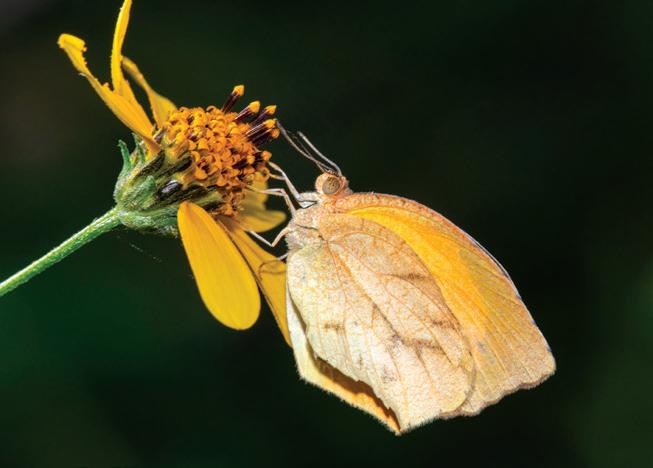
other ecological services they provide include pollination, pest control, and nutrient recycling. Nearly 20 years ago, a study (Losey and Vaughan, 2006, in BioScience) conservatively estimated the economic value of wild insect populations in the United States alone to be $57 billion annually.
Among all insect taxa, butterflies are the most extensively monitored. This year, Science published a study by Dr. Collin Edwards of Washington State University and nearly three dozen coauthors from across the nation that documented a 22 percent decrease in overall butterfly abundance from 2000 to 2020 in the contiguous United States. They reached this conclusion by examining data from nearly 77,000 surveys at 2,478 unique locations, involving 12.6 million individual butterflies from 554 species.
Species-specific trends in abundance over the study period could be calculated for 342 of the species encountered. Of these, 107 declined by more than 50 percent, including 22 species that declined by more than 90 percent. The steepest declines overall were in the Southwest. The five species with the largest drop in abundance were the Florida white, Hermes copper, tailed orange, Mitchell’s satyr, and West Virginia white.
The nature and extent of the decline suggests that multiple threats, including habitat loss, insecticide use, and climate change are responsible. Absent concerted efforts to address such threats, the abundance and diversity of these beautiful animals will continue to decline.
This century, the US population of 22 butterfly species—including the tailed orange—has dropped by more than 90 percent.
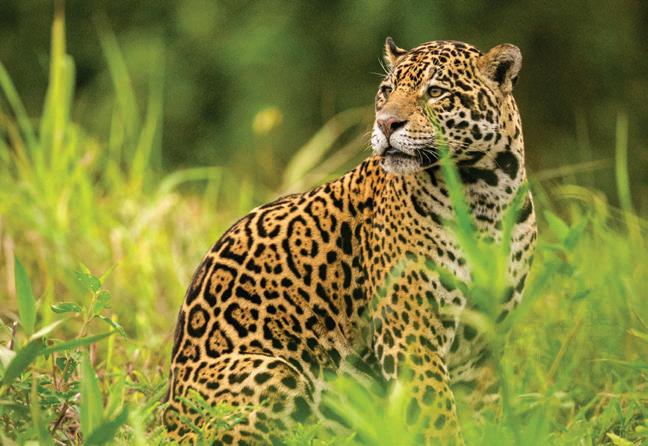
Colorado Cracks Down on Wildlife Trafficking
In May, Colorado enacted SB25-168, the nation’s most comprehensive state law to combat wildlife trafficking. The law is unique among state laws in that it prohibits the selling, possessing, transporting, importing, or exporting of any species listed under the federal Endangered Species Act, under Colorado’s own endangered species law, or on Appendix I to the Convention on International Trade in Endangered Species of Wild Fauna and Flora (CITES)—the principal mechanism through which the world’s nations regulate international wildlife trade.
The broad number of species covered establishes Colorado as a leader among states in the fight to reduce wildlife trafficking. At least 13 states and the District of Columbia have enacted laws to restrict or ban the trafficking of certain wildlife products within their borders. Most of these laws, however, only cover select, commonly trafficked foreign species and their parts, such as elephant ivory, rhino horn, and the skin, bones, and fangs of big cats.
Colorado has seen a rise in poaching in recent years. In 2022, Colorado Parks and Wildlife (CPW) penalized more than 2,600 poachers, who probably made up only a small percentage of the total. Included among the species illegally killed or taken from their homes in Colorado were reptiles and amphibians for the pet trade, eagles for their feathers and other parts, and black bears to extract bile from their gallbladders for use in traditional Chinese medicine.
Meanwhile, Denver International Airport has become a hub for wildlife trafficking. Last year, the US Fish and Wildlife Service reported seizing 1,150 parts or products of illegally
traded wildlife at the airport. From October 2023 to March 2025, it reported seizing parts, products, and live specimens from more than 56 species, including red-tailed black cockatoos, saltwater crocodiles, jaguars, reindeers, harp seals, and species of neotropical parrot, eagle, hawk, armadillo, shark, cobra, and bear.
The trafficking of live and dead wildlife and animal parts generates over $20 billion a year, making it the world’s fourth most profitable illegal international trade operation, trailing only the trafficking of drugs, humans, and counterfeit goods. Poaching for the illegal wildlife trade is a brutal, bloody business: Animals are often shot with military-grade weapons, and tusks, horns, and other parts are obtained by mutilating the animals—sometimes while they are still alive. Tight-knit groups of social species are torn apart, and babies who aren’t seized or immediately killed are often orphaned and left to die. Wildlife trafficking also poses a growing danger to people due to disease transmission and the involvement of organized crime networks that are killing an unprecedented number of African park rangers.
Colorado’s law will help to protect humans and animals from these terrible fates and should serve as model legislation for other states. AWI supported this bill from the beginning, submitting written testimony and delivering remarks to legislators. We commend the governor, CPW, and the bill’s cosponsors—Sens. Scott Bright and Dylan Roberts and Reps. Ryan Armagost and Cecelia Espenoza—for supporting a legislative solution to protect and preserve wildlife in Colorado and beyond.
CEQ GUTS NEPA by Rescinding Regulations
INApril, the Council on Environmental Quality (CEQ)— an arm of the White House that coordinates federal environmental activities and policy development— took the most drastic action since its creation in 1970 by rescinding nearly 50 years’ worth of regulations that implement the National Environmental Policy Act (NEPA). The impacts of this action are sweeping and severe. Among other things, it will make NEPA processes more unpredictable and diminish the public’s ability to raise concerns about habitat destruction, biodiversity loss, and declines in air and water quality that endanger public health.
NEPA was passed by Congress with overwhelming bipartisan support and signed into law by President Nixon in 1970. This statute is our country’s basic charter for the protection of the environment, and one of the most important environmental laws in the United States. Congress enacted NEPA to “promote efforts which will prevent or eliminate damage to the environment and biosphere” in order to “fulfill the responsibility of each generation as trustee of the environment for succeeding generations.” The law is critical to guiding federal decisions that impact human health and the environment. The three basic principles of NEPA are informed decision-making, transparency, and public input.
The law requires federal agencies to consider the environmental impacts of projects—such as new power plants, highways, oil and gas development, and logging—and to
explore less environmentally harmful approaches to achieving the projects’ objectives. It also provides opportunities for communities across the country to respond to and rebut the agencies’ data, proposed actions, and conclusions, giving them a chance to voice their concerns about how proposals may threaten public health and ecosystems.
AWI has routinely relied on NEPA to contest plans to kill certain wildlife populations in national parks and wildlife refuges, to challenge lethal control activities conducted by the US Department of Agriculture’s Wildlife Services program, and to protest wild horse and burro roundups. In comments to the CEQ, AWI strongly opposed this move to rescind NEPA’s regulations, and we are grateful to the thousands of AWI supporters who did the same through our action alert system.
Since 1978, NEPA has been implemented through regulations—issued by the CEQ—that have provided direction on NEPA compliance to over 80 federal agencies, project sponsors, environmental consultants, nongovernmental organizations, and communities impacted by projects. The complete revocation of the CEQ’s long-standing regulations introduces profound uncertainty into NEPA’s environmental review process.
It will now be up to individual federal agencies to determine how to comply with NEPA, what environmental impacts to disclose, and what level of public input is required.
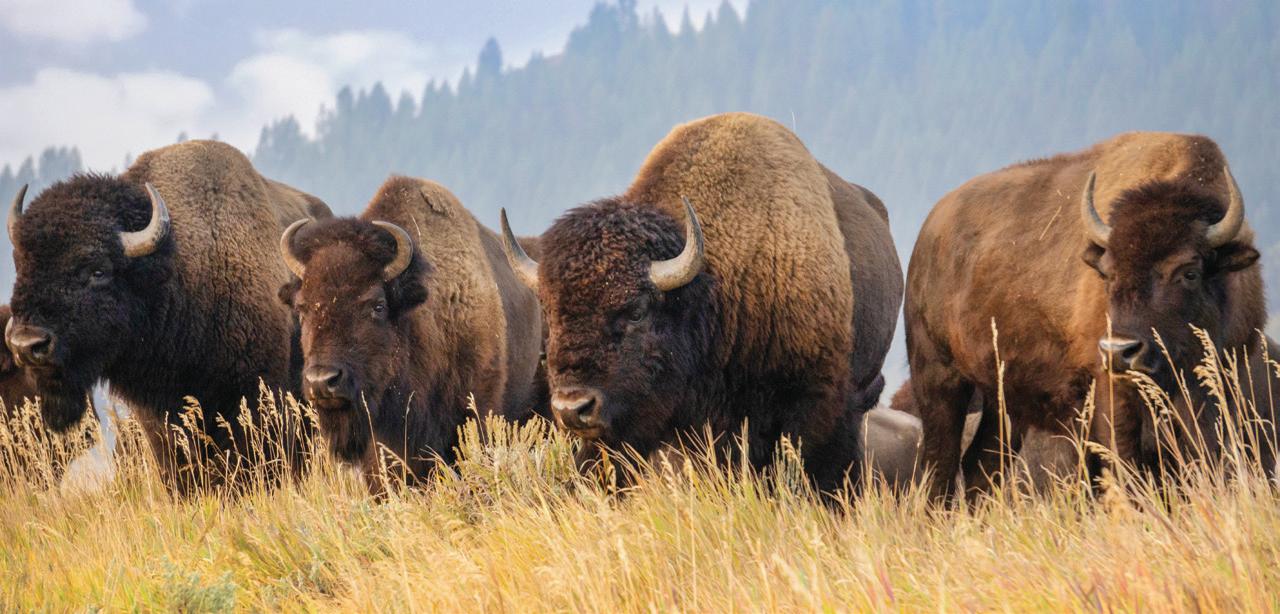
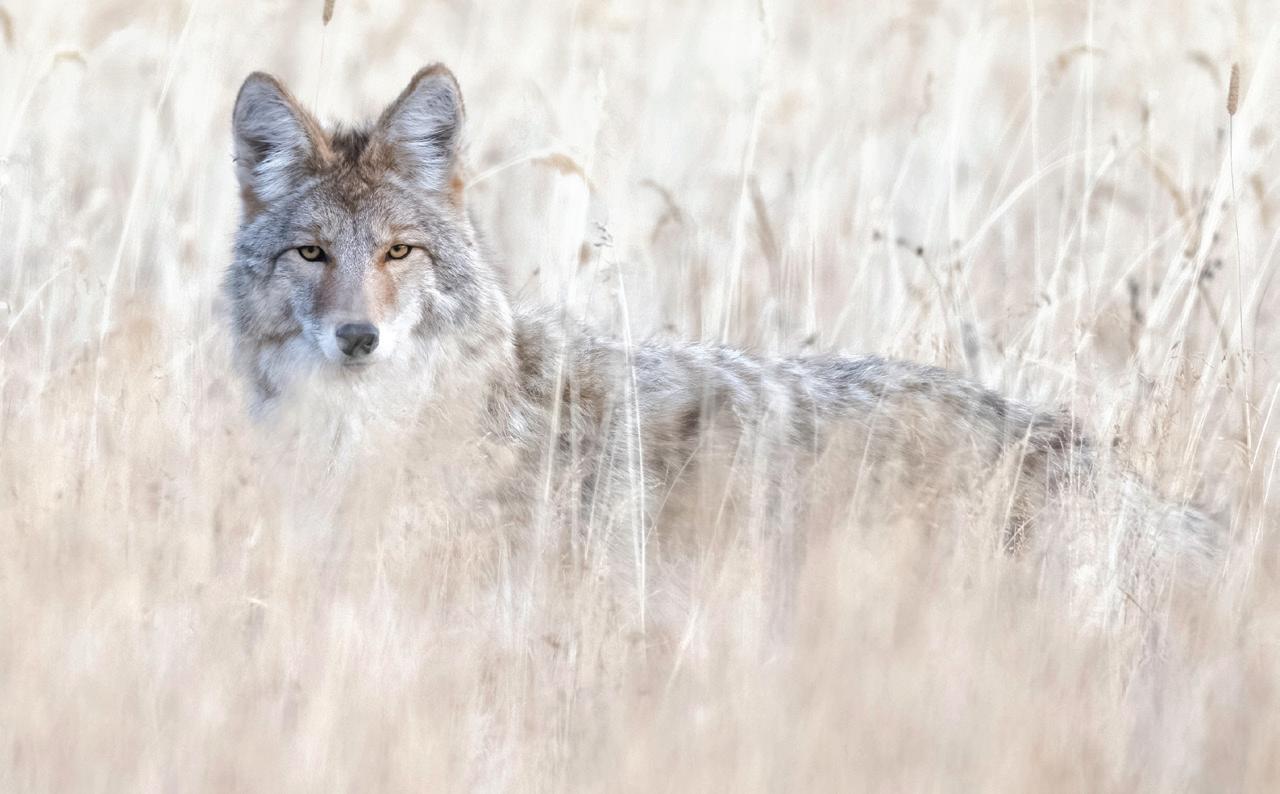
Concerningly, in guidance issued earlier this year, the Trump administration urged agencies to use controversial regulations issued by the CEQ in 2020, during the first Trump term. These regulations were the subject of multiple lawsuits and, ultimately, were largely reversed by the Biden administration.
The 2020 changes were unprecedented in their significance and scope and inconsistent with both the letter and spirit of the law. They undermined informed agency decisionmaking, reduced transparency, and limited critical public involvement, thus denying the public the democratic process at the heart of NEPA. Decisions on projects regarding land and ocean management, mining and drilling, and infrastructure were allowed to move forward without full consideration of their environmental impacts and without a requirement that a broad range of safer, more ecologically sound alternatives be considered.
In particular, the 2020 regulations jettisoned a requirement to evaluate the cumulative effects of a project. Cumulative effects are incremental impacts that may be minor in isolation but significant when viewed collectively. Evaluation of these impacts provides a larger-scale analysis of how projects, when viewed together, contribute to environmental harm. Removing this requirement to evaluate cumulative effects was clearly designed to restrict agencies’ ability to consider a project’s climate impacts—chiefly from greenhouse gas emissions— despite numerous courts having held that this is precisely the kind of cumulative impact analysis NEPA requires agencies to conduct. Prior to finalizing the 2020 regulations, the CEQ had recognized the need to analyze how projects might contribute to climate change, deeming it to be a fundamental environmental issue. Among its many harmful effects, climate change has fueled extreme heat waves, severe droughts, and intense storms that have devastated human communities and transformed ecosystems in ways that leave many wild animals struggling to survive.
The CEQ has now given agencies only a few months to attempt to determine what the 2020 regulations require and whether, or to what extent, to incorporate those regulations into their own NEPA rules. Rather than improving project delivery times and increasing efficiency, the CEQ’s actions instead sow greater uncertainty, upend established court rulings, policies, and procedures, and create confusion for the regulated community and the public. This will undoubtedly increase litigation, delays, and costs associated with project approvals while making it less likely that environmental impacts will be adequately assessed—with potentially devastating impacts on wildlife, habitat, and frontline communities.
In an unusual move, the CEQ’s decision to rescind the regulations was accomplished through an interim final rule, a process that is typically reserved for emergency situations. Such emergency situations have included imminent hazards to aircraft, people, and property, and immediate threats to the environment or national security, none of which were applicable in this case. An interim final rule allows federal agencies to dispense with the process of seeking comments from the public about what actions they propose to take.
The CEQ’s rescission of its long-standing regulations is one part of a much broader effort by the Trump administration to roll back regulations across nearly all federal agencies, which has been touted as the largest deregulatory effort in US history. The rescission of NEPA’s regulations will likely lead to destruction of wildlife habitat and loss of biodiversity, declines in air and water quality, and harm to public health, particularly in communities of color that are already disproportionately affected by toxic pollution. This leaves humans, animals, and our natural world more vulnerable than ever.
STIFLING SCRUTINY TO STYMIE REFORMS
States have repeatedly passed laws that seek to criminalize undercover investigations of abuse and other animal welfare issues on factory farms. Although these “ag-gag” laws have been repeatedly struck down in court on First Amendment grounds, states continue to enact them—tweaking the content each time in hopes of circumventing constitutional clashes.
This year, South Dakota passed Senate Bill 14, which makes it a misdemeanor to “use deception to gain access to or employment at an agricultural facility not open to the public with the intent to cause physical or economic harm or other injury” to the facility. Despite the wording, however, such a statute could readily be used to try to prosecute individuals whose intent is to protect animals from abuse, not cause injury to the facility. The bill also prohibits the use or placement of “a camera or electronic surveillance device that transmits or records images or data” while trespassing on the property. West Virginia, meanwhile, amended its Critical Infrastructure
Protection Act to include “licensed livestock stockyard facilities” among the protected structures. This law makes it a misdemeanor for individuals to knowingly and willfully enter such facilities without permission from the property owner.
As it has become increasingly difficult to gain legal access to animal agriculture facilities, animal advocates have turned to drones equipped with recording equipment to document abuses. A drone’s bird’s-eye view can provide a unique perspective on an operation’s massive scale, animal numbers, and extent of environmental degradation. In response, states are now moving to criminalize the use of drones to observe agricultural facilities as well. Iowa extended its previous prohibition on flying remote-piloted aircraft over animal feeding operations and homesteads to include any area within 400 feet of the animals, equipment, or structures—including barns, manure storage, and farmer residences. Legislators in Oklahoma have introduced Senate Bill 491, which similarly aims to prohibit drones from flying within 400 feet of factory farms.

The recent bills are merely the latest salvo in an increasingly determined effort to shield factory farms from public scrutiny regarding issues of animal welfare, worker safety, and environmental impact.
TORCHING LOCAL EFFORTS TO PREVENT BARN FIRES
AWI has reported extensively on barn fires, which subject hundreds of thousands of animals to horrific deaths each year. To address this problem and increase fire protections for animals on farms, AWI has called on industry groups and government bodies to adopt stronger fire safety standards— particularly the NFPA 150, Fire and Life Safety in Animal Housing Facilities Code developed by the National Fire Protection Association. (See AWI Quarterly, spring 2025.) Unfortunately, rather than working with the agriculture community to implement NFPA 150 standards—including installation of lifesaving sprinkler systems—legislators in some states have introduced bills to block local governments from requiring sprinklers in agriculture buildings. Such bills were introduced in Idaho (HB 104), Texas (SB 1948), and Missouri (HB 533). HB 104 sailed through the Idaho Legislature earlier this year and takes effect in July. SB 1948 passed in Texas and, if signed by the governor, will take effect in September. HB 533, fortunately, failed in Missouri. These bills represent a dangerous precedent that puts animal and human lives at risk.
Bodies of wild-caught octopuses hang drying in the sun. Recent efforts to establish a commercial octopus farming industry raise significant animal welfare and environmental concerns.
RISING TIDE OF US OPPOSITION TO OCTOPUS FARMING
Efforts to protect octopuses from commercial farming continue, with legislation proposed this year in several states to prohibit octopus farming and the sale of farmed octopus products. Campaigns by animal protection and environmental groups have resulted in the introduction of bills to prevent the raising of octopuses for food in Connecticut, Hawai‘i, Massachusetts, New Jersey, New York, North Carolina, and Oregon. These bills come on the heels of last year’s enactment of octopus farming bans in Washington and California, and introduction in the US Senate of the Opposing the Cultivation and Trade of Octopus Produced through Unethical Strategies (OCTOPUS) Act.
While there are currently no octopus farms in the United States, small octopus farming operations are underway in other countries, including Australia, Chile, Japan, Mexico, and Spain. Spanish seafood company Nueva Pescanova is planning a large commercial farm in the Canary Islands. The status of this effort remains uncertain, but research on octopus farming techniques continues at various facilities in Spain and around the world. In March 2025, another Spanish seafood company, Grupo Profand, acquired a permit for a research hatchery to breed octopuses. This concerning development suggests that the seafood industry is planning to forge ahead with octopus farming despite widespread opposition and significant ethical and environmental concerns.
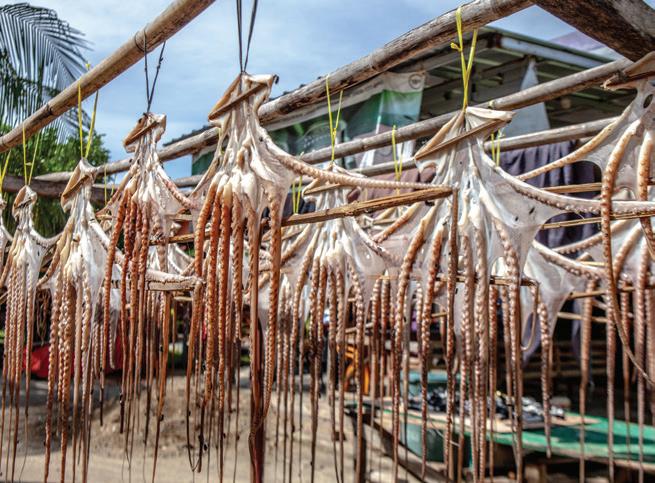
Farmed octopuses are kept in barren, crowded tanks under near-constant light, in direct conflict with their curious, solitary, nocturnal nature. They are typically killed via immersion in ice water, a method known to cause slow and painful deaths. Studies show that octopuses experience fear and stress and will alter behavior to avoid pain. Scientific evidence strongly suggests that the complex welfare needs of octopuses could not be met on factory farms—underlining the need to prevent such operations from taking hold.
FED BILL AIMS TO FORCE-FEED STATES WITH FACTORY FARM PRODUCTS
As Iowa state lawmakers seek to shut down scrutiny of the state’s abundant factory farms (see previous page), one of their US senators is trying to make sure no other state can enact farmed animal welfare reforms either. In April, Sen. Joni Ernst (R-IA) reintroduced a controversial federal bill that would override state laws that protect farmed animals from some of the cruelest confinement
practices, including use of battery cages, gestation crates, and veal crates.
Within the past 20 years, 11 states have established laws or regulations that prohibit certain confinement practices on farms. Two of those states—California and Massachusetts— have taken the additional step of prohibiting not only confinement practices, but also the sale of products within their borders that come from animals subjected to these practices, no matter where the animal is raised.
Ernst’s bill—previously dubbed the Ending Agricultural Trade Suppression (EATS) Act and now rebranded as the Food Security and Farm Protection Act— would reverse these reforms and prevent states from enacting similar measures that restrict the sale of products based on production practices. Last Congress, the EATS Act faced bipartisan opposition from lawmakers and significant pushback from thousands of entities, including individual farms, prominent food companies, veterinarians, food and farmer advocacy groups, and organizations representing consumers, workers, and the environment.
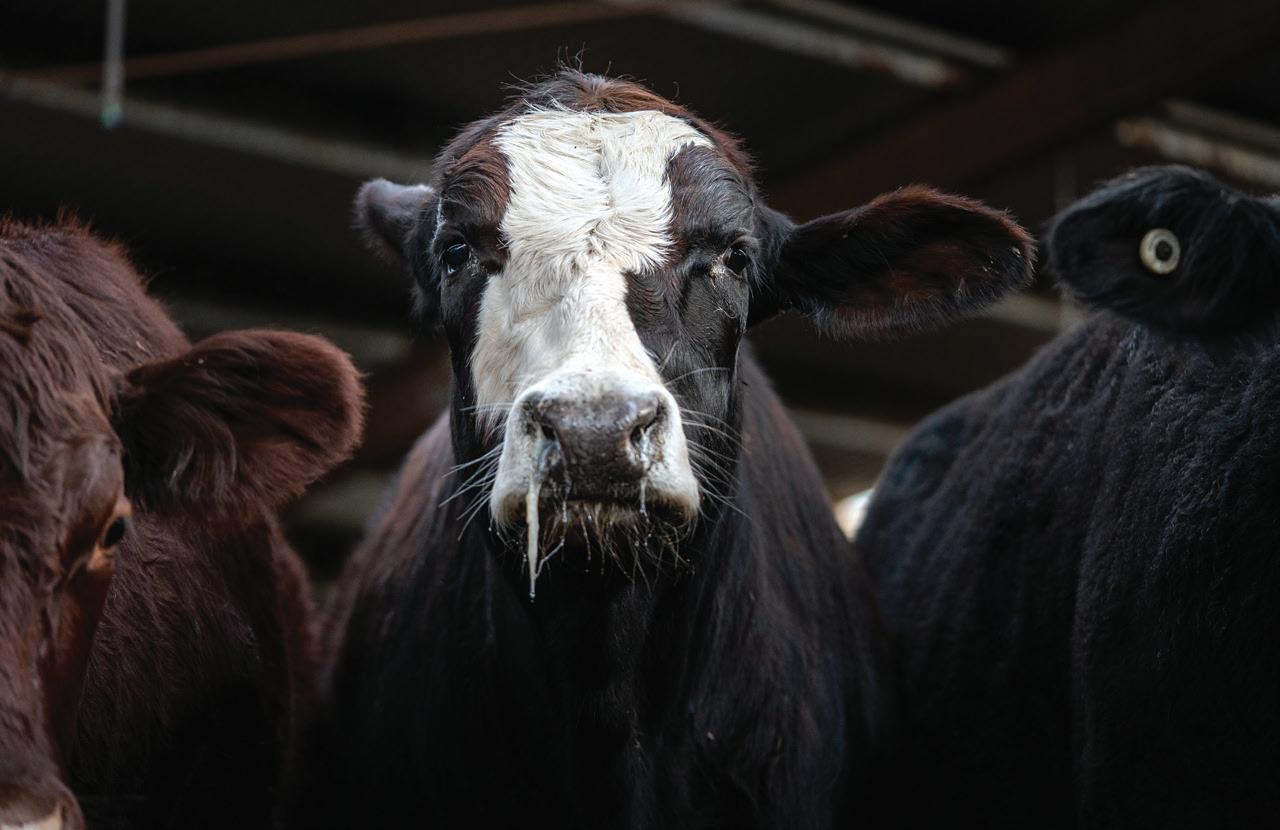
AWI REPORT: Absence
of Enforcement Is Compounding
the Cruelty at American Slaughter Plants
Scientists and philosophers call it the “meat paradox”—a type of cognitive dissonance that can occur among people who want to eat meat but not kill animals. The unfortunate reality, however, is that every meat and poultry product on grocery store shelves comes from a sentient individual who was slaughtered for food—nearly 10 billion of them each year in the United States alone.
In modern society, the dissonance is somewhat dampened by the fact that the vast majority of these animals are raised and killed far from the public eye. In the 1950s, however, in response to growing awareness of unchecked cruelty occurring at US slaughterhouses, Congress passed the Humane Methods of Slaughter Act (HMSA) to curtail the abuse and suffering livestock experience at slaughter.
A new AWI report, titled Humane Slaughter Update: Federal and State Oversight of the Welfare of Livestock at Slaughter, examines how effectively the HMSA is being applied to accomplish that aim. (One glaring problem is that the US Department of Agriculture interprets the term “livestock”— the animals covered under the HMSA—to mean cattle,
pigs, sheep, and goats, but not birds—the latter of whom constitute roughly 98 percent of the animals slaughtered.)
The report, which builds on previous, similar AWI reports, analyzes federal and state slaughter plant inspection records for the years 2019 through 2022 and makes recommendations about how livestock slaughter and handling practices can be (dramatically) improved. It emphasizes the need for stronger, more rigorously enforced federal and state regulations to address a wide variety of animal abuses that frequently occur in slaughterhouses. These include failing to provide water and feed for animals waiting to be killed; failing to adequately maintain pens, grounds, and equipment; mistreating disabled animals; using excessive force to herd animals; failing to properly stun animals on the first (or even the second, third, or fourth) attempt; and (consequently) shackling, hoisting, and cutting animals who are still conscious.
As noted in the report, mistreatment is especially rampant in certain plants. Within the span of a single year, for example, the USDA suspended or threatened to suspend
operations at least three times at nine separate slaughter plants for egregious humane slaughter violations. Such repeat offenders are a long-running problem: The same number of plants were issued multiple suspension notices within a single year during the time span covered by our previous humane slaughter report (2016–2018).
The report also discusses a host of problems associated with slaughter plants that kill and process animals for personal, noncommercial use. Such “custom exempt” facilities are essentially excused from regular federal or state inspection. Inspectors might only observe custom plant operations once or twice per year—and this inspection may not even take place on a day when slaughter activities are occurring. In fact, years may go by without a custom plant’s slaughter operations being observed for compliance with humane handling and slaughter requirements.
Another issue is the USDA’s failure to report instances of egregious abuse at slaughterhouses to local law enforcement officials for potential prosecution under state anticruelty laws. During one year-and-a-half stretch, for example, federal inspectors documented 122 instances of very young calves found dead in transport trucks arriving from California to a slaughter plant in Idaho. About 4,000 calves died in total, with per-truck losses ranging from 5 percent to nearly 30 percent. Yet the records offer no evidence that the USDA initiated an investigation, attempted to contact the trucking company or supplier, or notified local law enforcement.
In another example, over the course of about two years, USDA personnel at a slaughter plant in Iowa documented nearly 250 incidents of excessive use of electrical prods, paddles, pokers, and other animal handling implements affecting tens of thousands of animals. While the USDA did report the situation to the Iowa state veterinarian, there is no evidence that either the department or the veterinarian notified local law enforcement about the potentially criminal mistreatment.
AWI offers a number of recommendations in the report. To reduce the most common types of humane handling violations, we urge the USDA to revise the HMSA’s regulations, including by requiring that all stunning devices be routinely tested, that workers be formally trained in humane handling and slaughter, and that functional backup stunning devices be available. To deal with repeat offenders and discourage future offenses, we call on the department to establish a policy of escalating penalties, including longer suspension periods and more frequent withdrawals of inspection (effectively shutting down a facility). The report also reiterates the numerous recommendations put forward in a petition AWI submitted to the USDA in 2023 to reform
custom slaughter regulation, such as requiring that annual or biannual inspections occur only on days when slaughter is taking place, and that the department clarify that custom operations must still adhere to federal humane slaughter and handling requirements. (See AWI Quarterly, spring 2023.)
As a further means of deterring humane slaughter violations, AWI recommends that the USDA and state departments of agriculture cooperate with state and local law enforcement agencies in pursuing criminal animal cruelty charges for incidents of willful animal abuse. This process should begin with the USDA granting a 2023 petition submitted by the nonprofit Animal Partisan, with AWI support, asking the department to clarify law enforcement officials’ authority to enforce state anticruelty statutes. (See AWI Quarterly, fall 2024.)
Meat and poultry companies are well aware of the meat paradox and work hard to ensure that consumers’ taste for animal products is not derailed by their distaste for the killing—and the suffering inherent in producing these products at volume in industrial settings. Keeping the slaughter process hidden from public view is key to this effort. The USDA’s inspection records, however, offer a rare and important window into such operations.
In this report, AWI analyzes the evidence from these records and provides practical steps that should be taken to address the myriad problems associated with animal slaughter in the United States. By bringing this information to light, AWI seeks to increase awareness about the real-world impacts that production practices, policies, and personal food choices have on the welfare of animals and to build support for badly needed reforms.
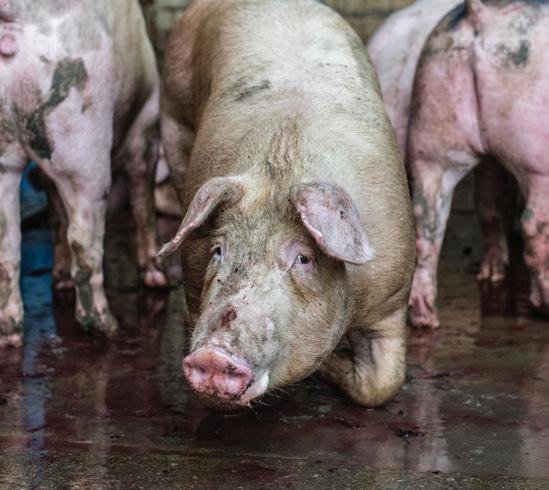
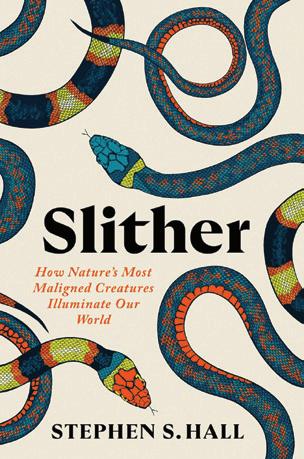
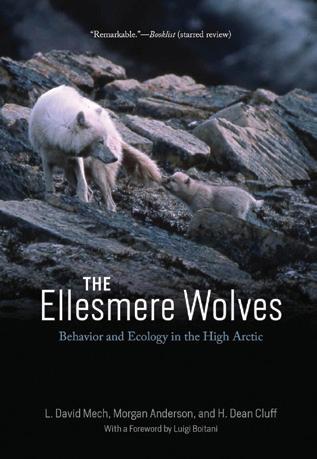

SLITHER
Stephen S. Hall / Grand Central Publishing / 416 pages
In Slither: How Nature’s Most Maligned Creatures Illuminate Our World, science writer Stephen S. Hall offers a fascinating exploration of snakes. Drawing from the humanities and science, Hall reframes these animals not as cold-blooded symbols of evil, but as influential players in natural and human history. They have appeared in our stories for millennia, from the healing temples of Ancient Greece to the Christian Bible’s Garden of Eden. The book traces how opposing representations—as villains versus symbols of rebirth and wisdom—reflect deeper human attitudes. Each chapter concludes with a side essay that spotlights a specific location where snakes have had a notable cultural or ecological impact.
Hall also discusses snakes’ increasing use in research— particularly medical research, where the pathological effects of snake venom, which vary by species and location, can provide insights for drug discovery. (Sadly, however, snakes and other cold-blooded animals in laboratories are afforded no protection under the federal Animal Welfare Act.)
Meanwhile, efforts to better understand their own unique metabolisms, sensory perception, and reproductive systems have yielded astounding discoveries—but often again at the expense of individual snakes. At one point, Hall describes snakes who are “about to donate their bodies to science,” a characterization that glosses over the involuntary nature of this “donation” (and the ethics of killing animals to learn more about them). Elsewhere, though, he highlights the role of snakes in fields such as biomimetic robotics and citizen science, where nonlethal, less invasive approaches can still provide valuable insights.
With over 4,000 known species and a history dating back 130–150 million years, snakes are evolutionary marvels. Nevertheless, like many other reptiles, their numbers are declining due to habitat destruction and other human-caused factors. Slither, both informative and thought-provoking, reveals how snakes have influenced not just ecosystems, but also our myths, medicine, and morality. Hall encourages readers to see snakes not as threats, but as complex and vital creatures worthy of respect and protection.
THE ELLESMERE WOLVES
L. David Mech, Morgan Anderson, and H. Dean Cluff / University of Chicago Press / 288 pages
The isolated, white-furred wolves of Ellesmere Island, Canada, are distinctive among their species in that they have not been conditioned over generations to fear humans. On the second closest land mass to the North Pole, they let researcher L. David Mech observe their dens and hunts uninhibited for the better part of 24 summers. In The Ellesmere Wolves: Behavior and Ecology in the High Arctic, which Mech coauthored with Morgan Anderson and H. Dean Cluff, he states, “The Ellesmere wolves—way off there near the end of the Earth—should long be able to continue their lives as natural as can be, wild and free of human wrath.”
Before beginning his research on the island in 1986, Mech had observed wolves from helicopters or small airplanes, tracking them on foot through snow and forests and with the aid of radio collars. But on Ellesmere, he could calmly watch over their dens from 50 feet away. He could tag along with the pups and their mothers or venture out with the adults on hunts. The wolves did not even fear his all-terrain vehicle—provided he was on it. Mech could casually observe scent-marking and food caching, while pups playfully untied his shoelaces and adult wolves snatched and frolicked with errant items dropped from his ATV. Living with them in such close quarters, Mech gained insights into their daily lives. He watched the adults visit natal dens—once every five hours, on average, and often packing extra food to share with nursing mothers.
Mech eventually retired from his summers with the Ellesmere wolves. This book brings together decades of his observations and those of his colleagues, who have continued following the wolves’ movements with radio collars. Compelling and informative, the unique story of the Ellesmere wolves and their observers has changed the way we understand who wolves are and how they live when free from human intervention.
WHO WILL LET THE DOGS OUT
Cara Achterberg / Waldo Publishing / 217 pages
Cara Achterberg is the cofounder and board president of the nonprofit organization Who Will Let the Dogs Out. In Who Will Let the Dogs Out: Stories and Solutions for Shelters and Rescues, she chronicles the conditions of dogs in shelters across the southern United States. Through storytelling, data collection, and personal anecdotes, Achterberg has penned what amounts to both an exposé of the current lack of resources and support for homeless dogs and a blueprint for change.
Achterberg traveled to over 150 shelters through the course of her research, talking to the individuals who run these facilities and spending countless hours with the animals. In doing so, she uncovered many common themes impacting the welfare and adoptability of shelter dogs in the region, from social stigmas around spaying, neutering, and the adoptability of certain breeds, to the steep costs of veterinary work and systemic lack of licensed veterinarians in the South. She also tells of the innovative ways in which some shelters have sought to overcome these challenges, with special focus on individuals making the biggest difference as they devote their time, money, and outsized empathy to the cause.
Her findings are remarkable, and the stories she tells shine a light on the urgency of the situation and the incredible work already being done. Achterberg takes a nuanced approach, acknowledging how complicated the situation really is—no one system or group of people is to blame for the current crisis. Rather, she argues, it is an interdisciplinary issue that requires contributions from all facets of society to enact real change. By focusing on committed leadership, affordable veterinary care, and an engaged community, Achterberg believes shelters can make great progress toward what is, in her words, the mission of every shelter: “saving every savable dog.”
BEQUESTS
If you would like to help assure AWI’s future through a provision in your will, this general form of bequest is suggested: I give, devise and bequeath to the Animal Welfare Institute, located in Washington, DC, the sum of $ and/or (specifically described property).
Donations to AWI, a not-for-profit corporation exempt under Internal Revenue Code Section 501(c)(3), are tax-deductible. We welcome any inquiries you may have. In cases in which you have specific wishes about the disposition of your bequest, we suggest you discuss such provisions with your attorney.


AWI SALUTES NEW CLASS OF ANIMAL-FOCUSED ACADEMICIANS
Now in its sixth year, the AWI scholarship continues to recognize and invest in high school seniors across the United States who are deeply committed to improving the lives of animals both now and in their future careers. From a highly competitive pool, 12 students were selected to each receive a $3,000 scholarship. The awards are intended to aid in covering post-secondary education expenses for students who have already made a tangible difference for animals and aim to lead change on a larger scale.
The 2025 recipients embody a wide range of interests and career paths, yet all share a common goal: creating a kinder, safer world for animals. They’ve launched high school clubs, coordinated large-scale cleanup events, and fostered animals in need. One recipient created a YouTube channel focused on ethical environmentalism; others have organized successful fundraising events for their local rescue groups or employed their artistic talents to raise awareness of human-wildlife conflicts.
Applicants were asked to reflect not only on their past efforts but also on how they plan to continue helping animals. The
selection committee read about aspiring veterinarians, nonprofit leaders, and endangered species advocates. It’s clear that the next generation of animal champions is both passionate and prepared. From classrooms and beaches to social media and community meetings, these young leaders are already making their mark, and AWI is glad to support them as they take their next step. Congratulations to the 2025 AWI Scholarship recipients:
Violet Allori, Banks High School, Oregon; Hanna Juma, Glassboro High School, New Jersey; Colleen Kielbania, Essex North Shore Agricultural & Technical School, Massachusetts; Sania Lee, Heritage High School, Georgia; Blake Lugosi, William T. Dwyer High School, Florida; Kayla Mabry, Rockford High School, Michigan; Cora McCabe, Washington-Liberty High School, Virginia; Aashay Mody, Irvine High School, California; John O’Connor, Tenafly High School, New Jersey; Daniel Onwudinanti, South Grand Prairie High School, Texas; Madison Villafane, Wando High School, South Carolina; and Samantha Waldron, Highland High School, Idaho.
